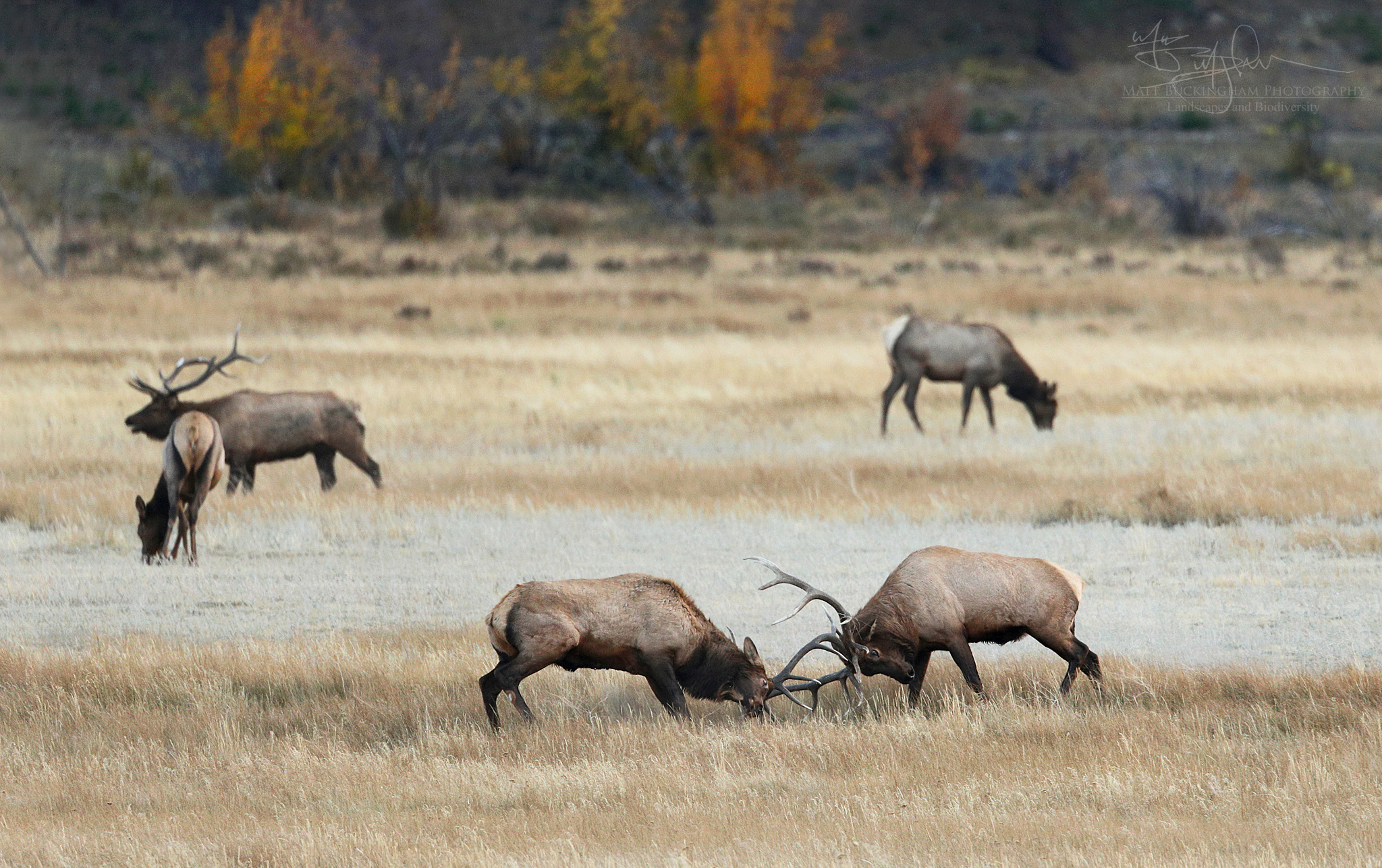
When the air grows cold and the aspens turn from green to gold, a haunting call echoes through the valley and heralds an ancient ritual of violence and affection that is essential to the continued existence of one of our planet’s most majestic creatures: The North American elk, the Wapiti.
I owe a lot to the wapiti, as I see it. The elk played an important role in shaping my passion for wildlife and the natural world. I first visited elk country before I could walk. My family and I embarked on annual camping trips to the great national parks of the American West, visiting places like Yellowstone and the Tetons, Glacier, and Rocky Mountain National Park. These trips were the highlight of my year as a kid, easily eclipsing birthdays and Christmas. It was there, among the towering peaks, varied life zones, and charismatic megafauna that I felt most at home. During these formative years, the natural wonders of the Rocky Mountains were perhaps the biggest factor contributing to this deep, life long passion.
I had a particular affinity for the wapiti (Cervus canadensis). My parents will attest that I was obsessed with them. It was always the animal I most looked forward to seeing. When I wasn’t out west, I pestered them to visit the small captive herd in Elk Grove, Illinois, not far from where I grew up. I spent all year reading about elk, writing and drawing about elk, and longing to see them again. I proudly stated many times that they were my favorite animal.
Perhaps a part of me envies the elk. I will never know how it feels to possess that degree of pure, natural strength. A dominant bull in rut is the embodiment of power, pride, lust and rage, qualities often experienced, revered, and reviled by man. Yet despite his pomposity, he is also tender, protective, and patient.
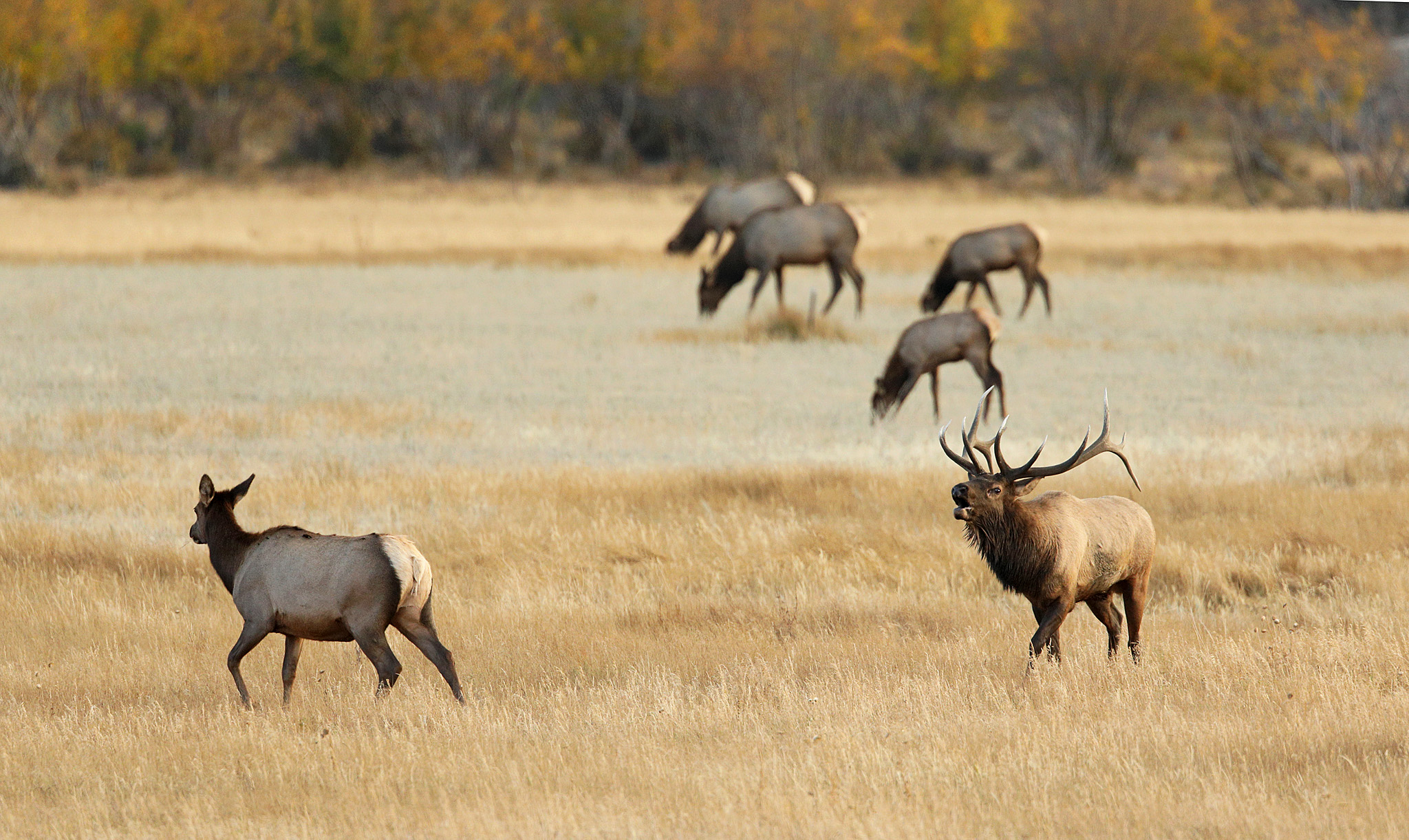
And it’s hard to imagine another animal with an appearance as majestic as an antlered wapiti in his prime. They are stately creatures whose black, ivory-tipped blades of bone curve above their head like a crown. Few realize just how massive they are before seeing one. An exceptional specimen can reach ten feet in length, five and a half feet at the shoulders, and have antlers that tower to nearly nine feet above the ground.
But it is the bugle, at least in my experience, that I most closely associate with the wapiti. This sound that, for me at least, is inextricably linked to wildness of spirit and wilderness of nature. It is a melody, that alongside the howl of the wolf, the call of the loon, the rustling of leaves in the wind, and the roar of a torrent over rocks, creates the symphony of the natural world.
Though Carolina and I saw a small bachelor group in New Mexico last year, it had been over a decade since I really had the opportunity to observe free ranging wapiti. This autumn I was able to be among them once more, and it was extra special. It was the first time that I really experienced the rut. It was a magical thing, watching the spectacle of competition between bull elk in their prime, and observing the subtle nuances of the hierarchy and bull selection within the cows. I felt as if I was truly among the elk, as bulls herded their harems through our campsite at all hours of the frigid night, bugling within a few meters of our tent. The nights were so cold that one evening it rained, and in the morning the tent was fly was frozen solid. Yet these extremes were not enough to deter the elk from their ancient ritual that would ensure a place for the next generation. All the more reason, I thought, to marvel at the incredible toughness and tenacity of these Rocky Mountain monarchs.
Below are the stories of several of the elk that we observed on our trip. There are tales of heartbreak and triumph. We will never know the minds of animals, and the sensations they experience is largely a mystery. It is clear to me, however, that they do experience some form of many of the emotions familiar to us, including those that we admire and abhor. I prefer not to anthropomorphize them, however at their core, it has become clear to me through observation and consideration that many species are not so different from us after all.
Kawuneeche Valley
The Kawuneeche, Arapaho for “coyote valley/creek”, is a narrow valley that skirts the Colorado River near its head source in the adjacent mountains. It is one of the main features on the west side of Rocky Mountain National Park. As I type this, the East Troublesome Fire is burning through a large portion of the valley and surrounding forests. Fueled by an abundance of beetle-killed lodgepole pine, the blaze grew from a modest fire of 20,000 acres to the second largest fire in Colorado’s history at over 170,000 acres in the span of a single day. The conflagration forced the residents of Grand Lake and surrounding areas to evacuate with only moments’ notice. Though it is an undeniable tragedy in terms of human impacts, I remain hopeful and confident that the natural communities of the areas will be better for it. The quaking aspen, Engelmann spruce, and lodgepole pine will return. Fuel loads will be reduced and the soils will be enriched with a flush of nutrients. The regenerating habitat will provide excellent habitat for elk and mule deer.
Elk are more spread out on the west side of the Park than in the moraines and parks in the Park’s eastern portion. They are still relatively easy to observe, however, and we saw many throughout our stay. The five bulls below were observed here, where one can catch a glimpse of the rut as it has occurred for thousands of generations of wapiti.
Broken Dagger

Broken Dagger was the first bull I photographed. We saw his harem first, wandering through a picnic area of all places. We counted 8 cows, a spike bull, and a few calves. “Where is the bull?” I thought. Then I caught a glimpse of his muddy hindquarters through the spruce and aspen. It was evident that he had been wallowing in some dark and undoubtedly foul-smelling mud. Wallowing is a common practice among mature bulls during the rut. They will seek out an area full of it, and before they roll about and coat themselves in mucky soup, they urinate profusely in the area they intend to “bathe”. This concoction of mud and spoor is meant to make him more intimidating to his rivals.
A broken tine on his right antler earned him his name. Broken Dagger was missing his “royal” or “dagger” tine. This is typically the longest, most prominent tine on a wapiti’s antler. It is not uncommon for bulls to lose tines during the rut. Most are likely lost during battles with other bulls, however they can also be lost when bulls thrash the ground, shrubs, and saplings with a testosterone fueled rage. I wish I knew the story of how Broken Dagger lost his.
I noticed that Broken Dagger was rather quiet, bugling only rarely. This was in stark contrast with most of the mature bulls we observed during the trip. I later speculated that he made an effort to avoid drawing attention to himself and his harem for fear of losing it to another bull. Considering that the next time I saw him, two days later he was In the company of only a single cow that was soon usurped by a large bull named Flattop, it seems this was not a far-fetched conclusion.
Raghorn

The term “raghorn” refers to a bull elk with a set of antlers that is smaller than would be expected for the number of points they contain. Mature bulls typically carry six tines on each side, and this particular antler configuration typically set in at 4 to 5 years of age. There are a number of factors that could contribute to smaller antlers on a bull, however assuming that he is already mature, this bull that I named Raghorn likely simply drew the short end of the genetic stick.
Antler size is important in elk, however it’s not everything. I have heard plenty of stories of bulls with smaller antlers overpowering those with massive racks. These bony armaments certainly play a role, however fights are won with strength, confidence, and tenacity.
It seemed Raghorn was having some luck with the ladies. He had a harem of four cows that he snuck past Flattop as he was occupied with fending off Romeo. Like most people, I enjoy a good underdog story. Raghorn would have a hard time holding onto a harem, let alone convincing one of those cows to accept him as a mate, but I’d be rooting for him.
Flattop
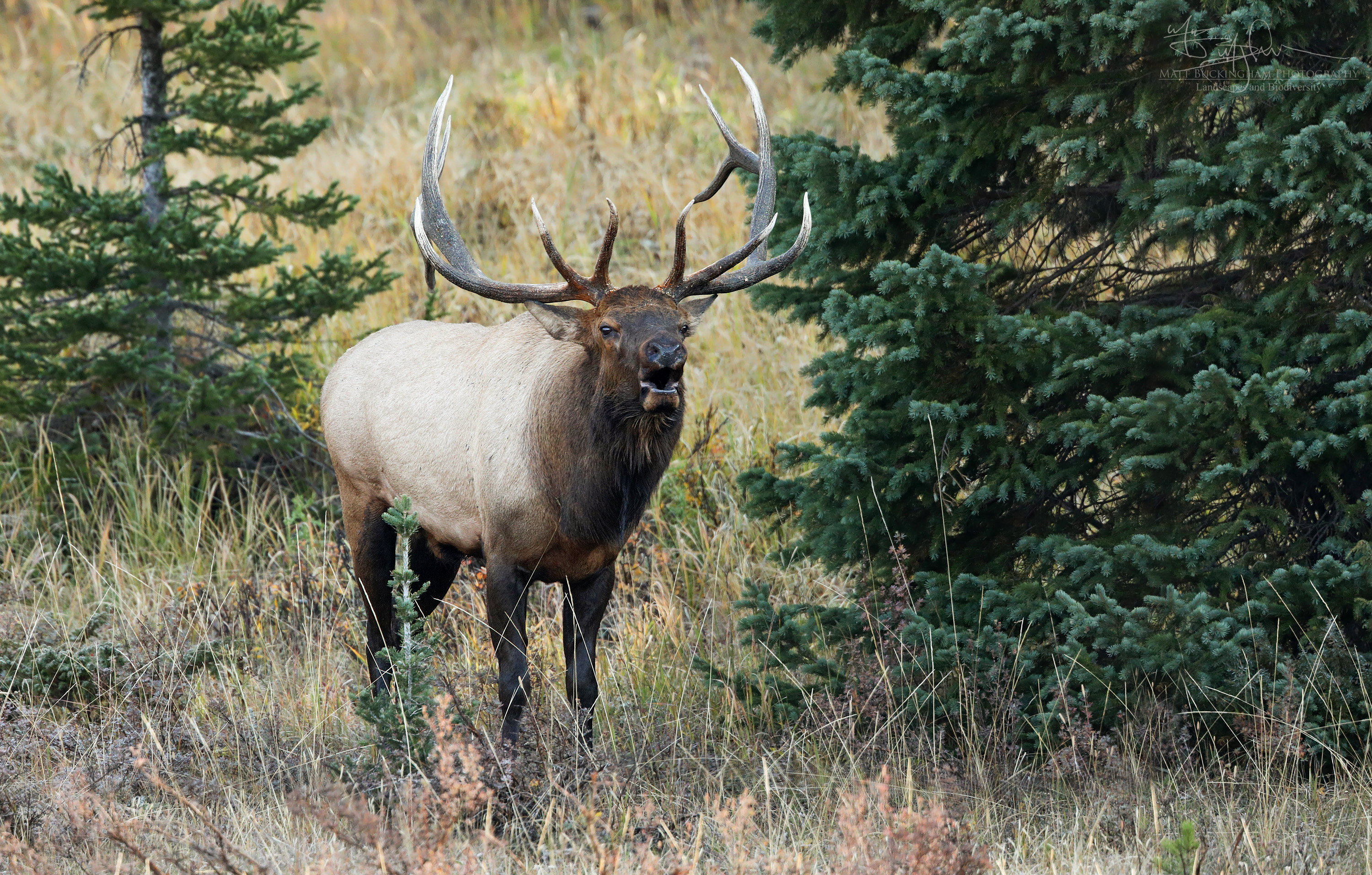
Among the bulls of the upper Kawuneeche Valley, there was a clear “herd bull”. I first met this dominant bull on our third day in the park. Early that morning I had spotted Broken Dagger in a distant field courting a solitary cow. As I watched him, I could hear a powerful bugle in the timber behind me, on the opposite side of the road. There seems to be some debate as to whether or not the size of a bull correlates with the volume or deepness of his bugle. This has long been the opinion of elk hunters and outdoorsman, however it seems that empirical evidence to this point is lacking.
It must have been an hour or more that I was watching Broken Dagger and listening to the rival bull bugling. At times he was so close, but I could not see him through the dense spruce and beetle killed lodgepole pine trunks standing like specters in the forest. Every so often I would catch a fleeting glimpse of the bull and his harem, but he would vanish just as soon as I saw him, like a phantom haunting my dreams.
Eventually his harem began to emerge from behind the curtain of conifers. A calf with the group began chirping, a call used to communicate within the herd. In that moment, the cow that had been in Broken Dagger’s company suddenly perked up and very quickly made her way across the meadow to the tree line. She crossed the road within ten yards of me, and moved directly to the calf, which had advanced to within 20 yards or so. When she arrived, the calf immediately began to nurse, and the cow began licking its withers and flanks as mother elk are wont to do.
In that moment, the hidden bull appeared from behind a big spruce. He stepped out into the open, turned, and let out a magnificent bugle. The harem, including the new cow, quickly returned to the forest. And the bull bugled once more, before disappearing from sight behind them. In all he was in the open for around thirty seconds, just enough time to capture a few images.

I named him Flattop for his brow tines, which typically curve upwards. In Flattop, however, they were perfectly straight, with the tips taking an abrupt 90 degree turn. His antlers were heavier than most of the bulls we saw, especially further up the beam. This gave him a unique, intimidating look that seemed to serve him well as none of the other area bulls dared engage him in combat.
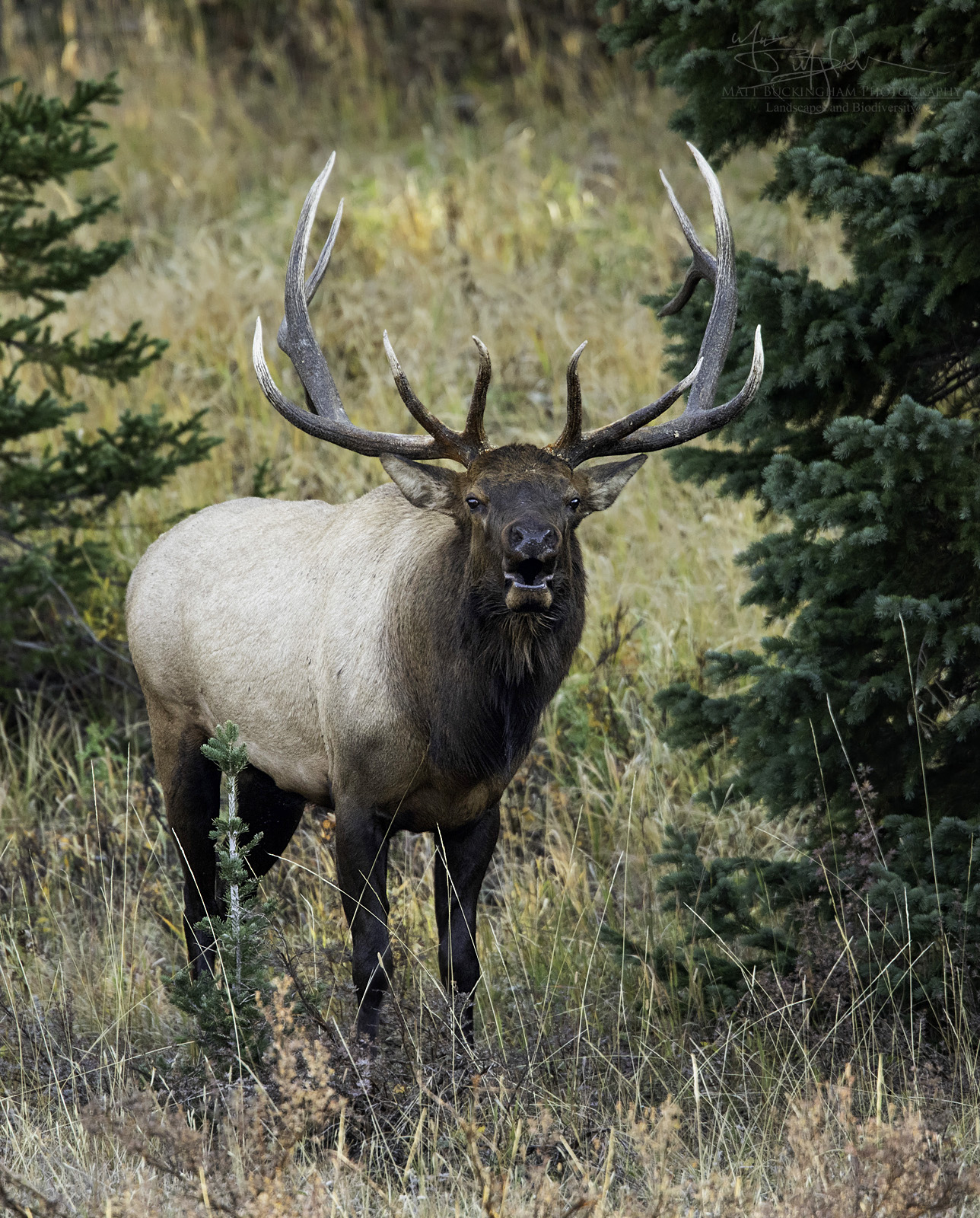
There is a softer side to the rut, which we observed on multiple occasions. Flattop had his hands full running off satellite bulls and keeping his harem close. But between his charging and bugling, he took time to tend his cows. A bull will often lick a cow as a means of announcing his intention to mount her, however we watched as Flattop would slowly approach bedded cows and lick and even nudge his face against them. Most of the cows seemed receptive of this, and many responded in like kind. I believe this served as a kind of bond reinforcement within the harem. Perhaps Flattop knew, in some way, that showing his gentler side could lead to more loyalty among the cows, and in turn they would be less likely to risk leaving him to join another harem of a bull that may not be so kind.
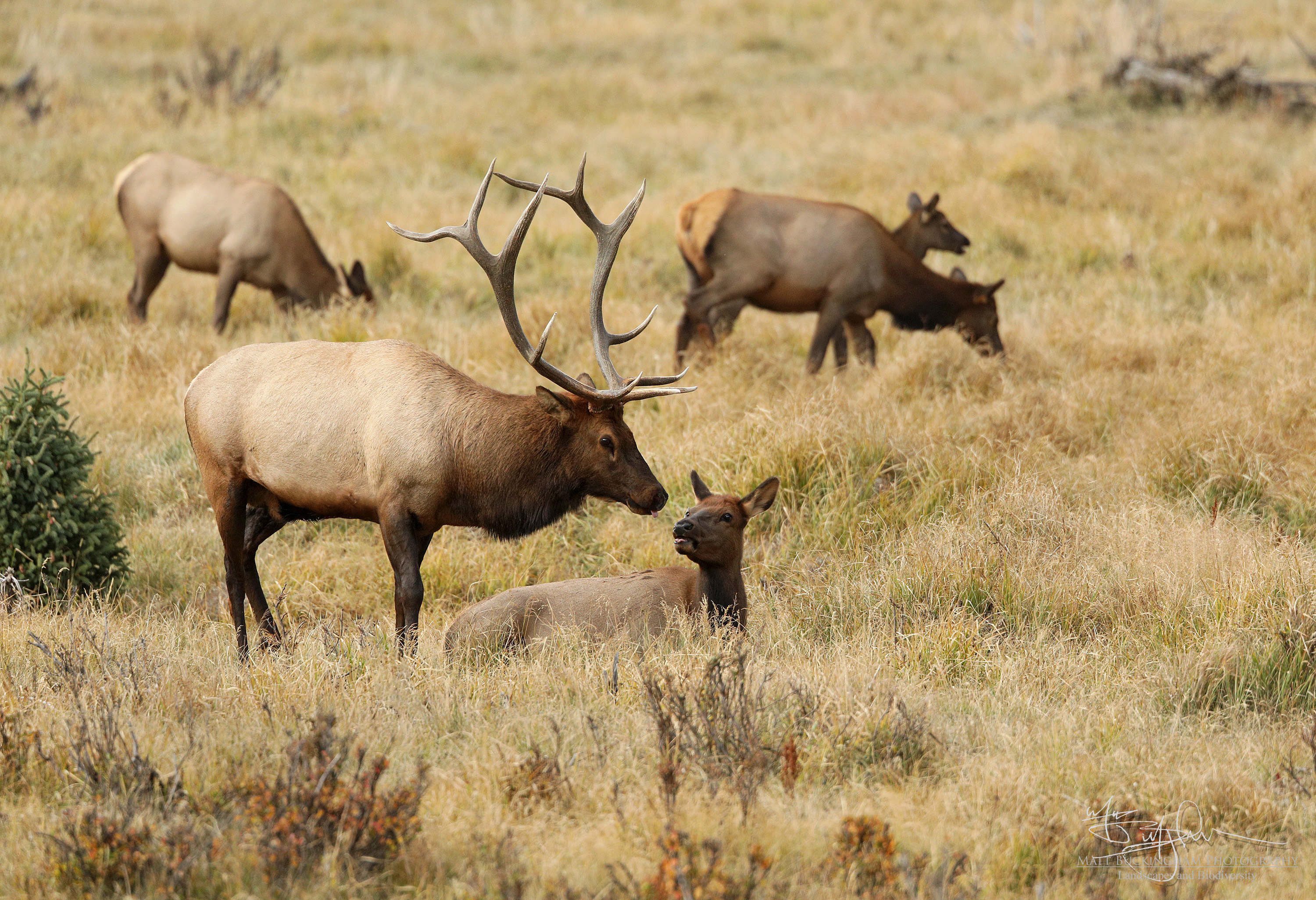
I was grateful with the time I was able to spend with Flattop. He showed us what it takes to be a successful herd bull, and each time we saw him he had a harem of at least a dozen cows. I am confident that he will be successful this rut, and hopefully for many ruts to come.
Romeo
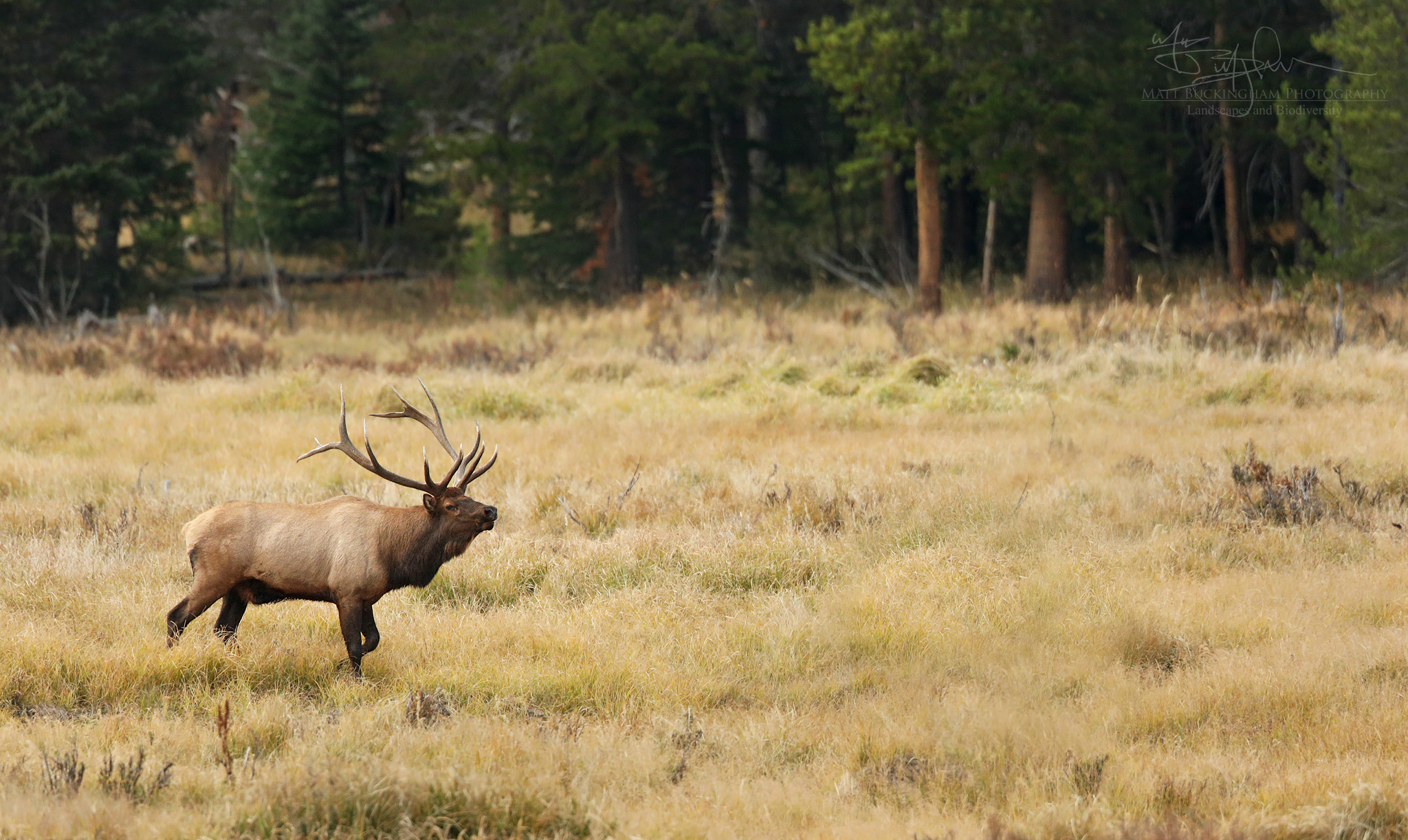
Judging the age of a bull in the field can be tricky. If I had to guess, however, I would say that Romeo was a young bull. He was long, lean, and lithe – not stocky like Flattop. He also seemed to have an endless supply of energy, and constantly tested Flattop, attempting to overthrow the king and gain control of his harem. Though he was brave, for all his bravado, he never locked horns with the other bull, and Flattop succeeded at driving him away after each attempt.
Among the satellite bulls, however, Romeo was clearly top dog. He ran several other lesser competitors off, and then proudly bugled to celebrate his victory. In my eyes, he had all the makings of a future champion.
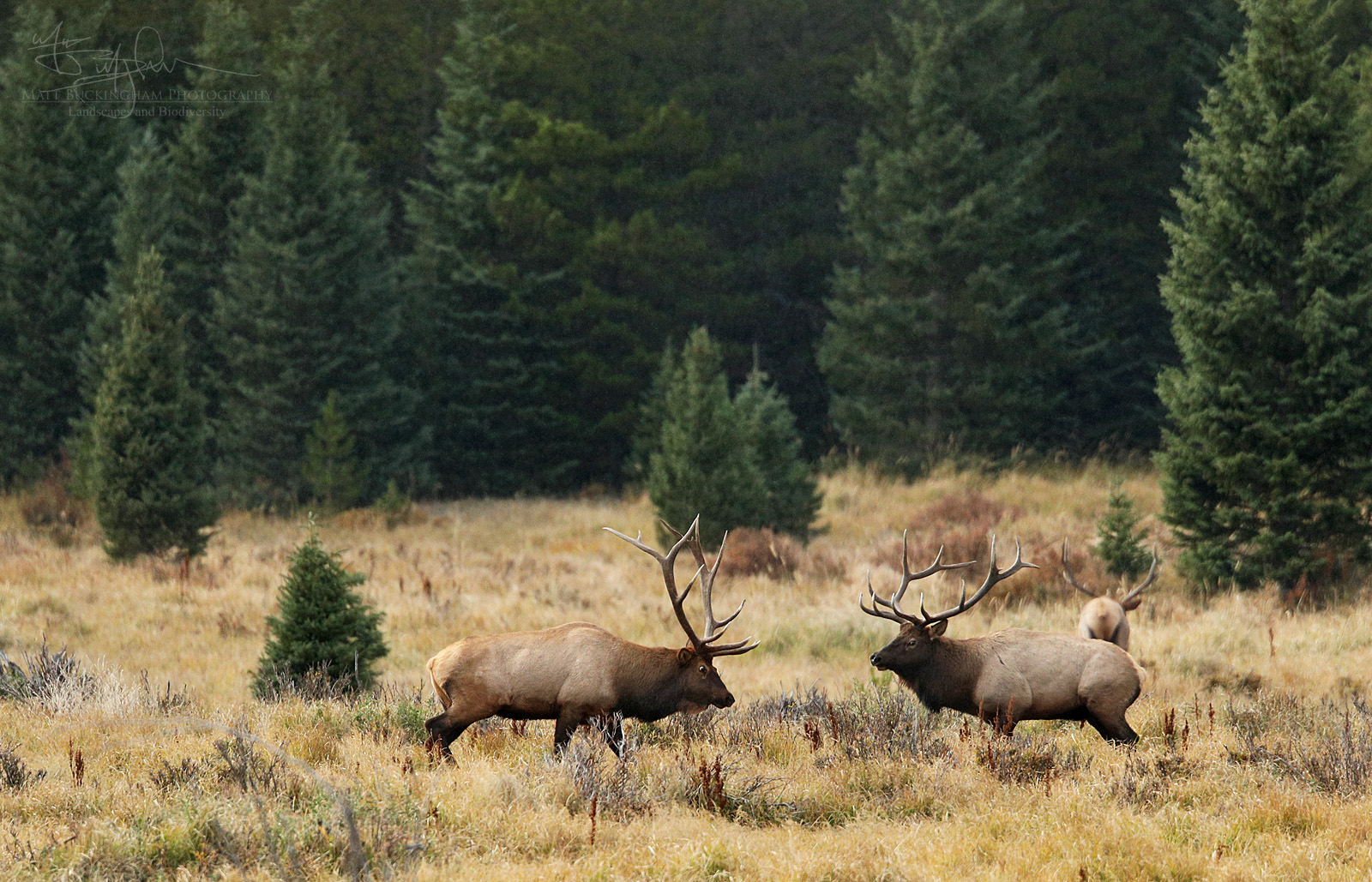
At one point it appeared that Romeo had gained the favor of one of the area cows. We watched one evening as the two enjoyed one another’s company for almost an hour. Perhaps the cow was nearing estrus, and Romeo could sense it. They even seemed affectionate.
But things all changed in an instant, as Flattop suddenly raced across the valley. Frightened by his approach, the cow moved away, and Flattop quickly cut between her and Romeo. He then dropped his antlers toward Romeo as a threat and a warning. Romeo replied in like kind, but quickly admitted defeat. Flattop then ran the cow back to his harem, leaving Romeo alone in the cold rain. Bested and shamed, but not broken, Romeo then let out a mournful bugle as if assuring Flattop that things were far from over.
I hope I will meet Romeo again some day. I look forwarding to seeing the bull he will become, and like to imagine that one day he will give Flattop a run for his money for the ruler of the upper Kawuneeche Valley.
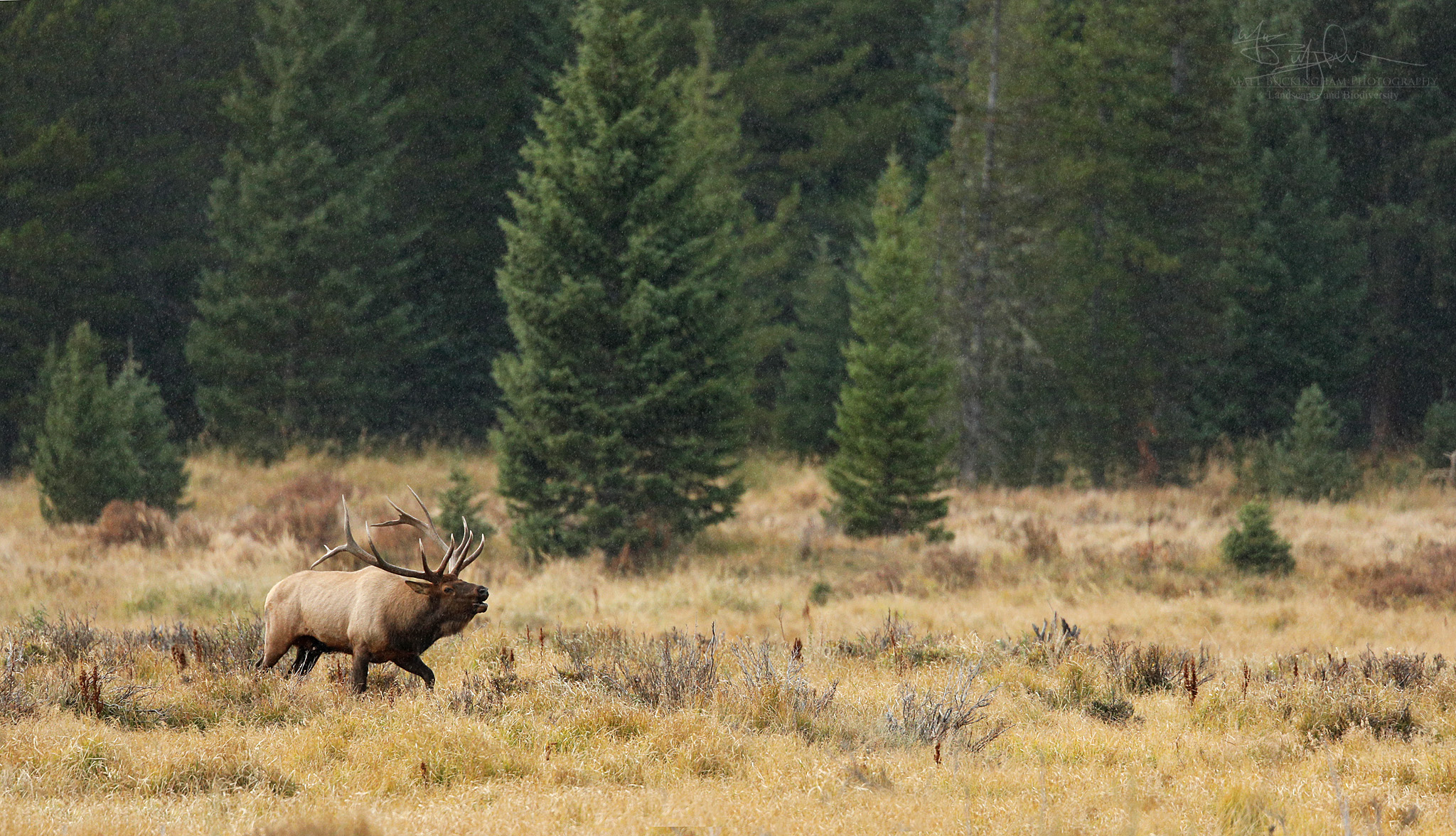
Obsidian
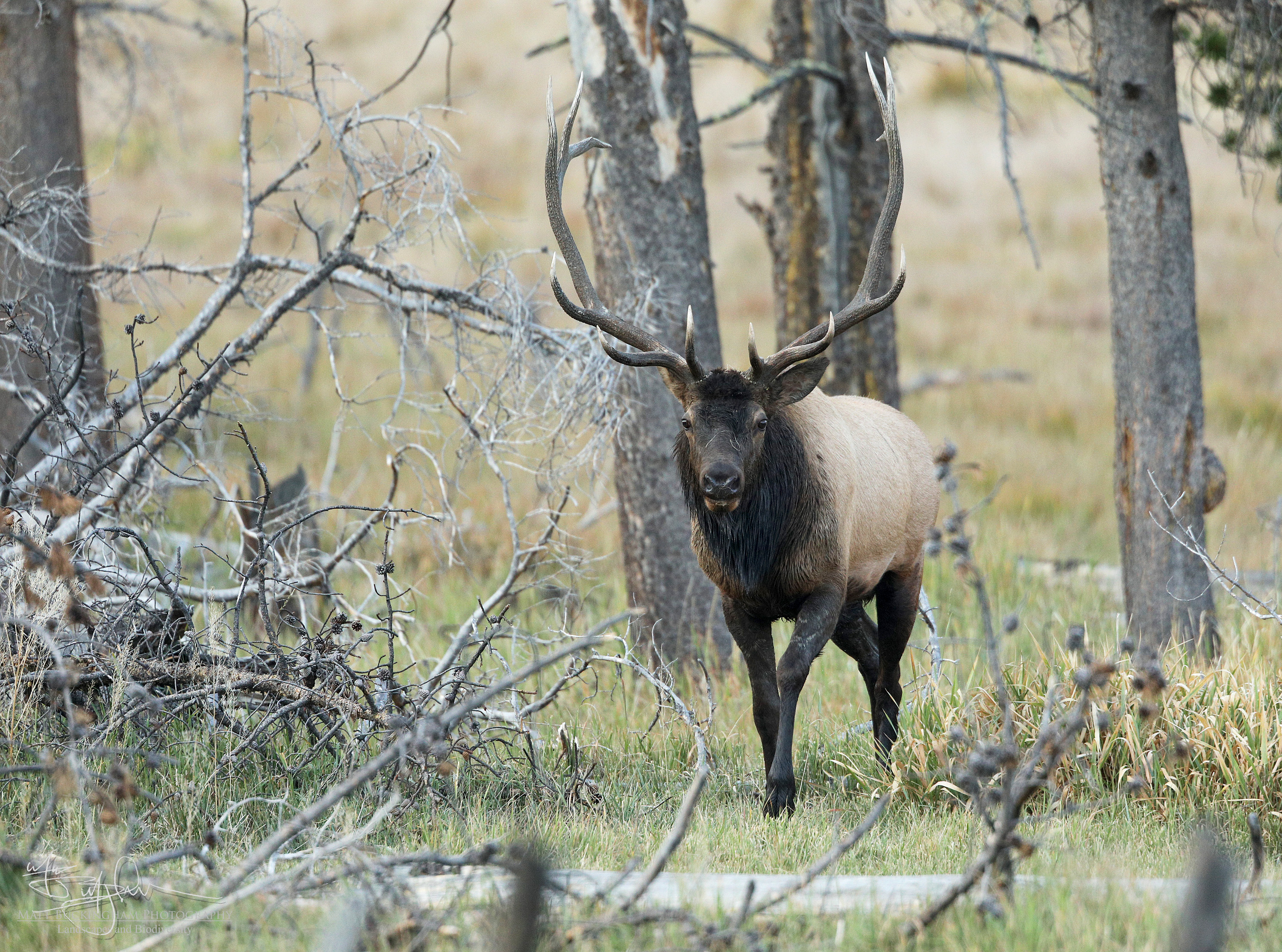
A wapiti bull in rut is a dangerous thing. It is always intimidating being close to such a powerful, majestic creature. When they begin to go crazy with a testosterone fueled rage it becomes downright scary. None of the elk we encounter made me as uneasy as a beautiful bull that I named Obsidian.
Obsidian looked every part the stereotypical regal stag – the kind that one sees in movies and paintings meant to illustrate their majesty and elegance. Though we saw other bulls that were larger and sported more impressive racks, Obsidian stood out as the most visually striking. He was named for his black mane, with fur longer and more defined than most bulls. This contrasted starkly with the rest of his pelage, which was much lighter. His antlers were dark, high, and tipped with ivory.
Though his good looks were certainly memorable, it was the intimidating air about him that left a lasting impression. We were alone when Caro spotted Obsidian, which is unusual for this time of year. When we got out, I could hear coyotes yipping nearby. Though even a pack of coyotes would stand no chance against a bull in his prime like Obsidian, their presence made the black-necked bull uneasy. As I focused on him, he looked to me and communicated with his gaze and body posture in no uncertain terms that he wanted me gone. I thought better than to challenge him and quickly made my way to the relative safety of my truck, and Obsidian took off running across the valley, frightening off a cow moose and her calf in the process.
We moved across the valley in the general direction that Obsidian was moving, and found a good place to pull in and wait. After a while he arrived with half a dozen cows. He moved into a stand of beetle-killed timber, where he spent the next half hour or so foraging. Bulls in the rut devote little time to feeding, however for the moment there were no other bulls in the area, and his infrequent bugles went unanswered. Eventually he moved close enough for me to capture some images. Though I never got a clean shot of him in the open, I liked the chaos created by the tangle of limbs from downed trees. To me, it reflected his seemingly unpredictable nature.
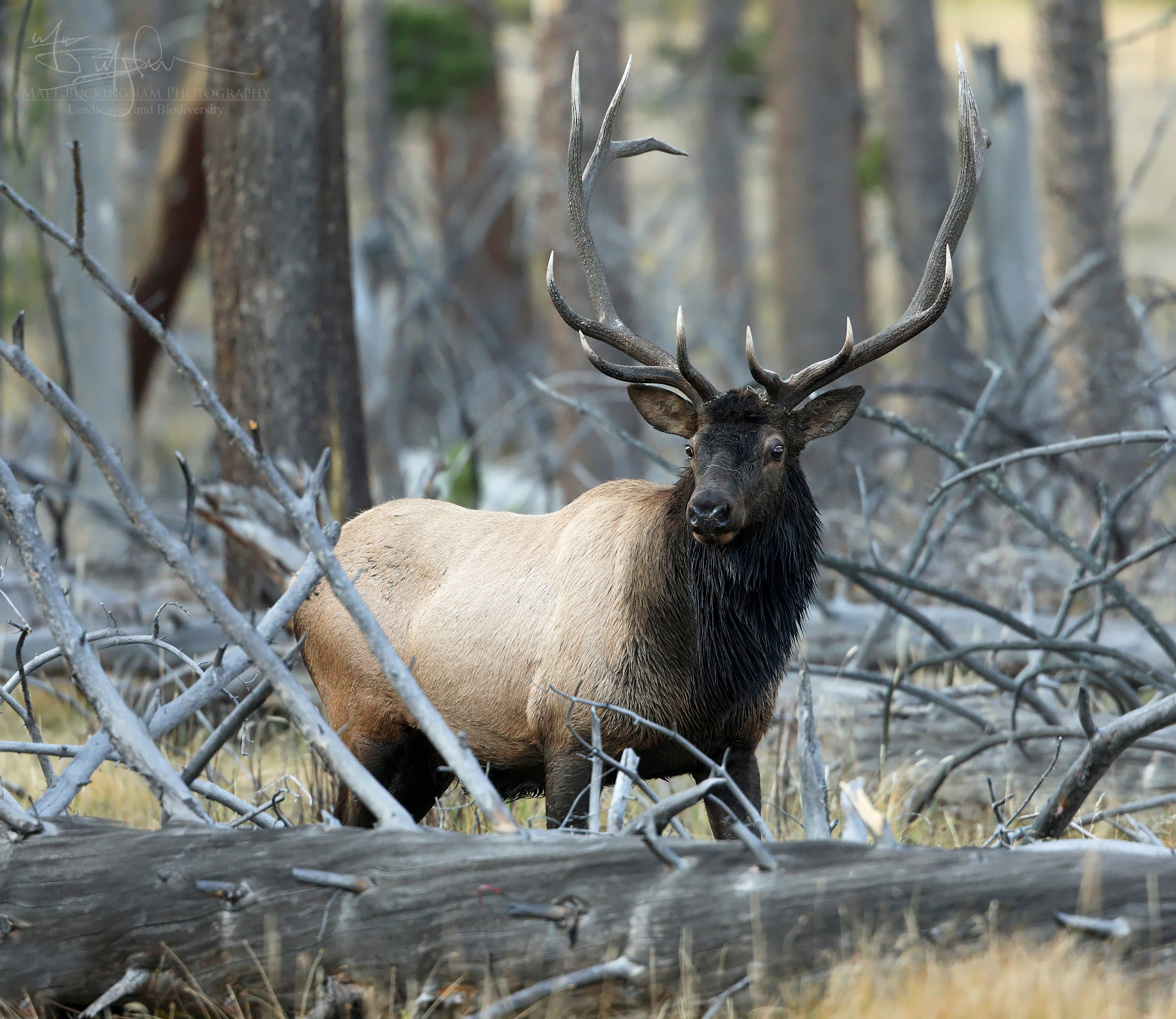
Elk of the Moraines and Sun Forest
After camping three nights at 9,000 feet at the west side of Rocky Mountain National Park, we crossed over Trail Ridge Road and descended to the east side of the park. Here at around 7,500 feet the days and nights were much warmer. It rains less here, and dense forests of Engelmann Spruce, subalpine fir and lodgepole pine are replaced by open savannas dominated by ponderosa pine and massive scars formed by glacial deposition known as moraines.
The dynamics of the elk rut is different here too. Hundreds of wapiti gather in these moraines, and an abundance of large, mature bulls results in a constant cycle of harem upheaval and reclamation. Instead of one bull holding the harem, it seemed that here several bulls, each controlling their own harem, converge. The result of this was spectacular, with frequent conflicts, and a cast of characters, each with a fascinating story to tell.
Scrapper
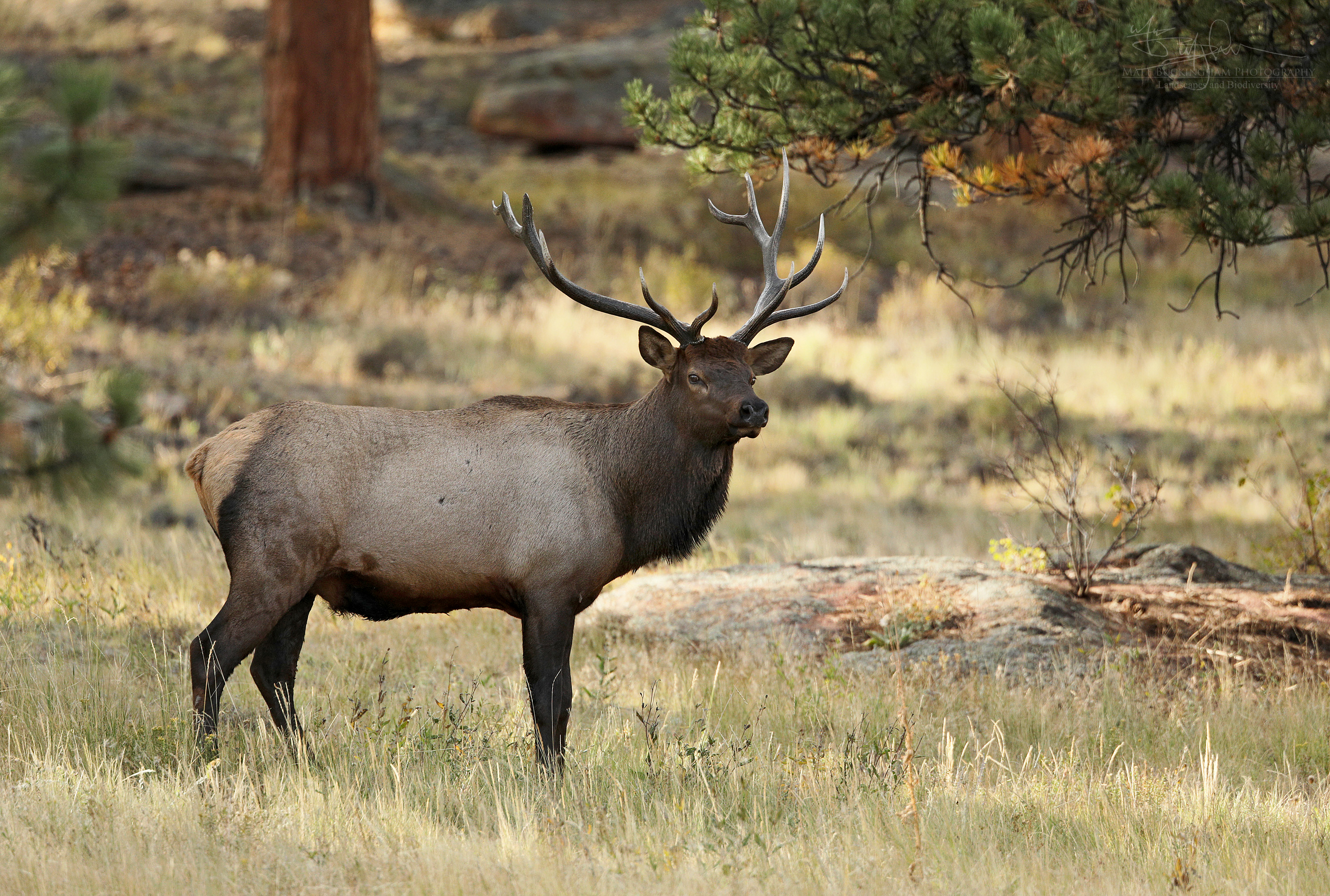
We saw many elk with missing antler tines. Scrapper had lost some portion of four, a testament to his proclivity for battle. It was still relatively early in the rut, but this warrior had already seen many battles, and it was apparent that he knew how to fight. We saw him near the Beaver Meadows entrance station, and was moving his harem through widely spaced ponderosa pines.
Scrapper had the largest harem of any of the bulls that we encountered. We saw at least 18 cows with him, and he ensured that they stayed together. He wasn’t huge, but clearly he knew how to fight. I hoped that his winning streak would continue, but during the rut, things can change in the blink of an eye.
The King

The undisputed ruler of his domain, the King had the largest antlers of any bull we saw, by far. I didn’t see him until the very end of our last day of the park, when the light was fading and the night soon to come. After I spotted him he became the focus of my lens for the remainder of the evening.
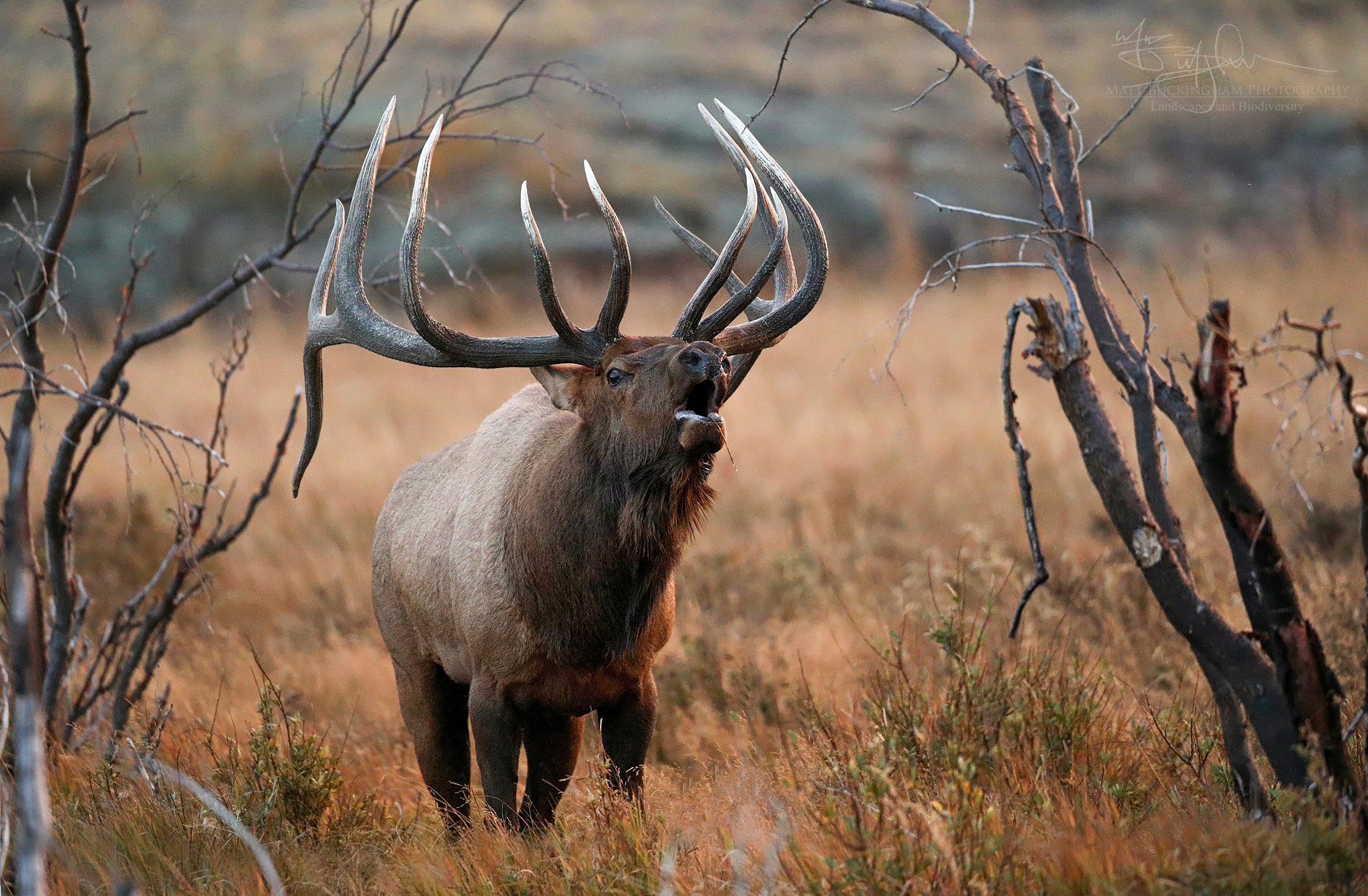
When I saw the King, he was away from most of the action, in a small thicket with a cow and a calf. At first I was surprised that he was not out pushing all the other bulls around and gathering a massive harem. But perhaps there was a strategy behind this. As a bull who has clearly survived and dominated many ruts in years’ past, he likely knew that it was still a bit early for most cows to be in estrus. He would also be intimately familiar with just how taxing the rut could be on a bull.
I also suspected that the cow he was tending was coming into estrus. He routinely tested the air with his tongue and approached her, as if sensing she may be ready. For the time being, however, she spurned his advances. Still, he was patient.
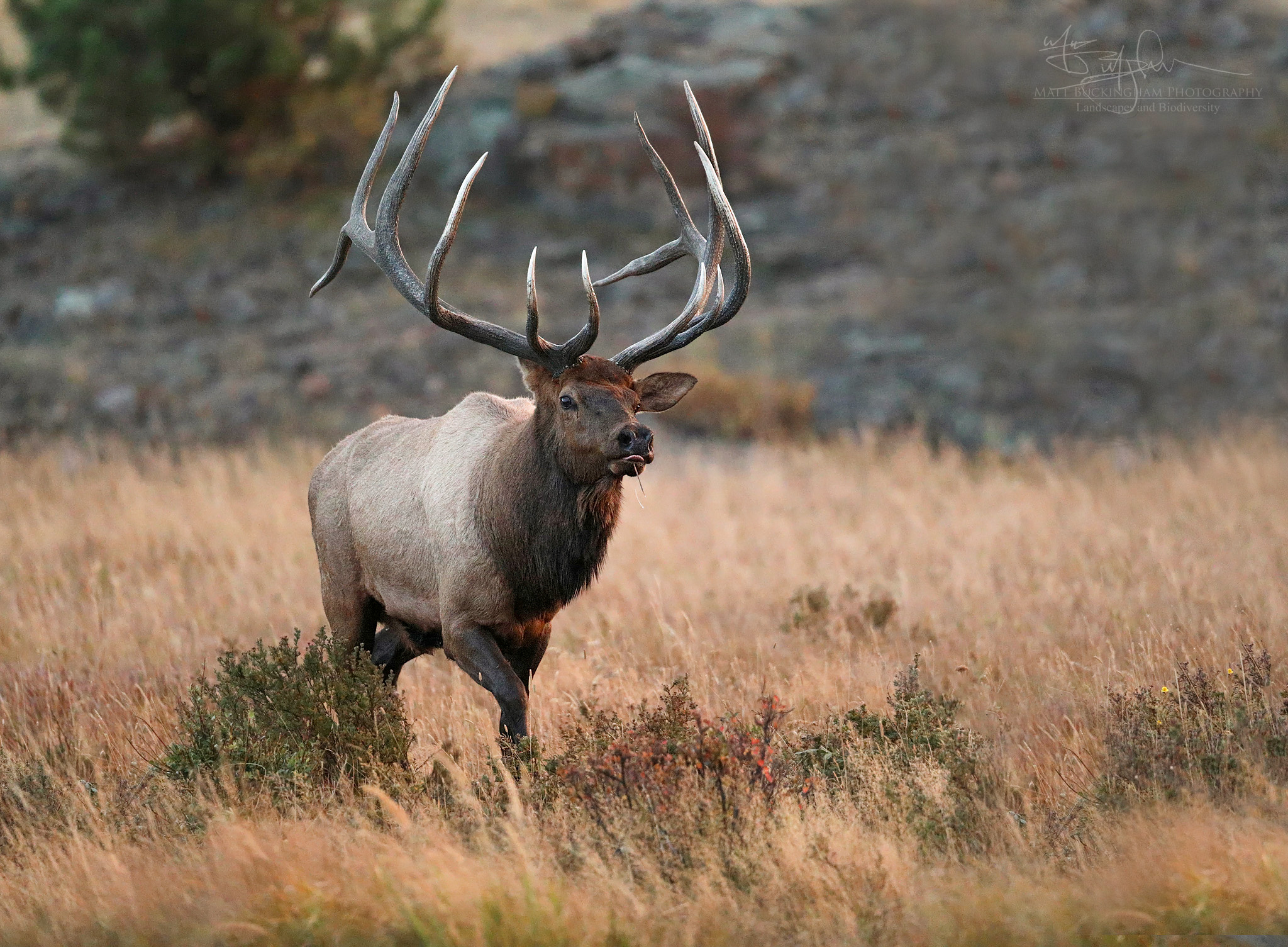
I didn’t realize just how popular a bull the King was, though I’m not surprised. I later found his image posted all over the internet. Some images were from 2016, and he looked much the same as he does now. He was an old bull that has likely dominated the rut for the better part of a decade. It was hard to imagine another bull that could match him, however sometimes an unlikely contender emerges that threatens to change everything.
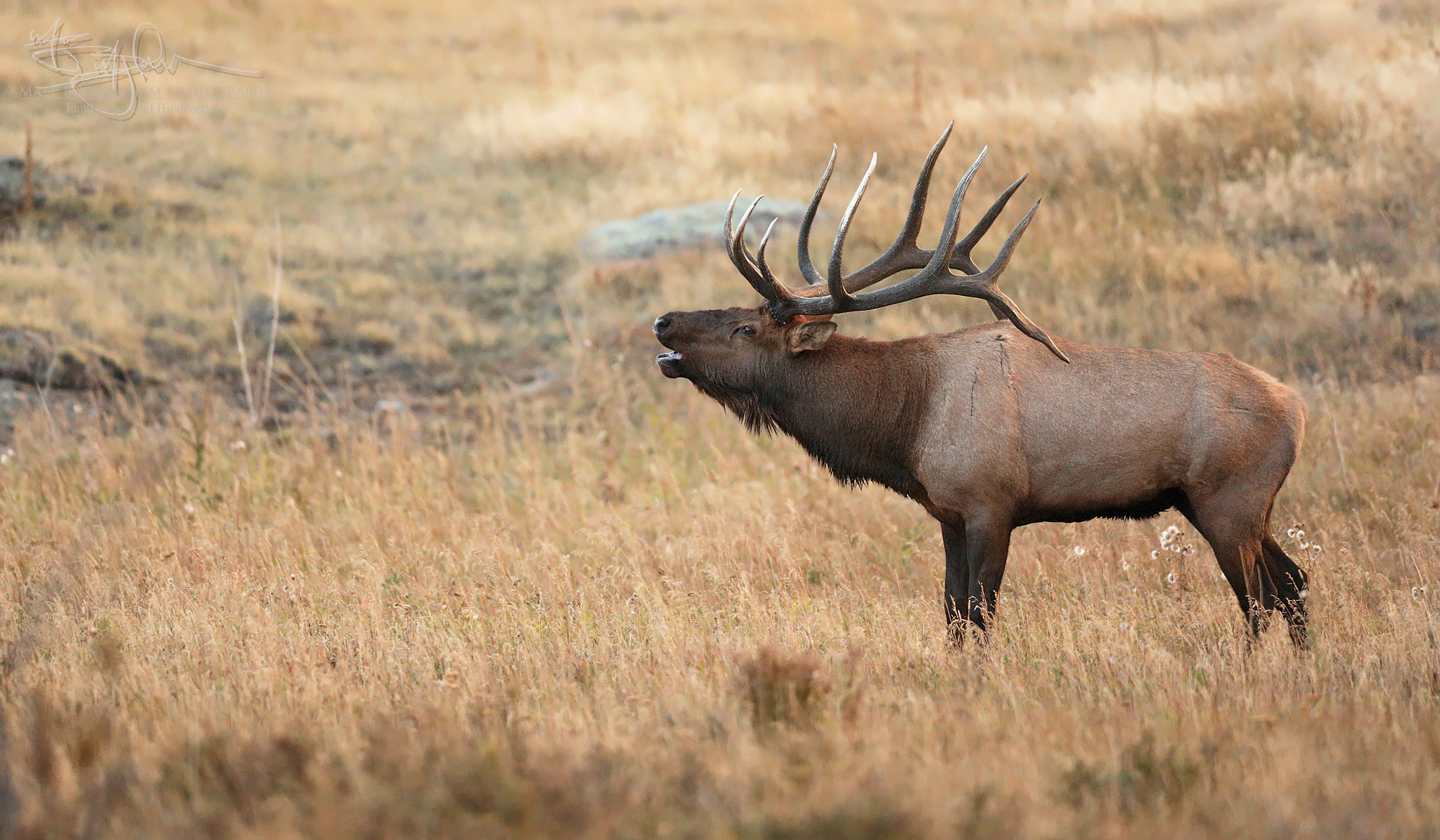
Siete
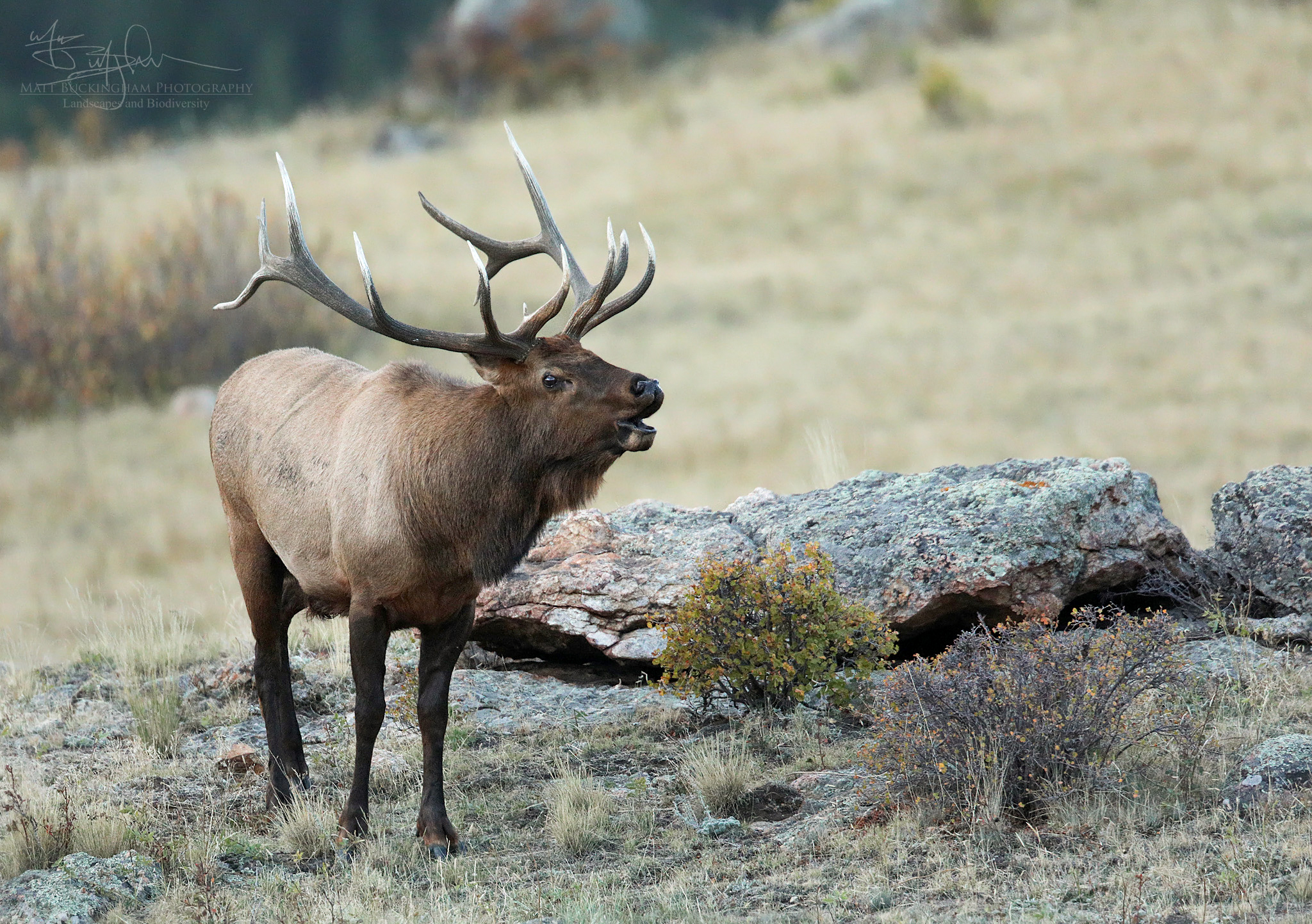
Siete, named for the seven tines on his right antler, was my favorite of the bulls we encountered. He did not have the largest antlers on the field, nor was he the most aggressive. It was, however, evident that he was a very confident bull and commanded respect from the other bulls that he encountered.
If I had to guess, I would say that Siete was the largest bull that we saw, in terms of body mass. His neck and shoulders were particularly massive, and it’s no stretch of the imagination to think that would translate to incredible strength. While it has been demonstrated that larger antlers are more intimidating to other bulls and more attractive to cows, it is brute strength that wins actual battles. For this reason, if there was another bull in the Moraine could challenge the King, I believe it would be Siete.
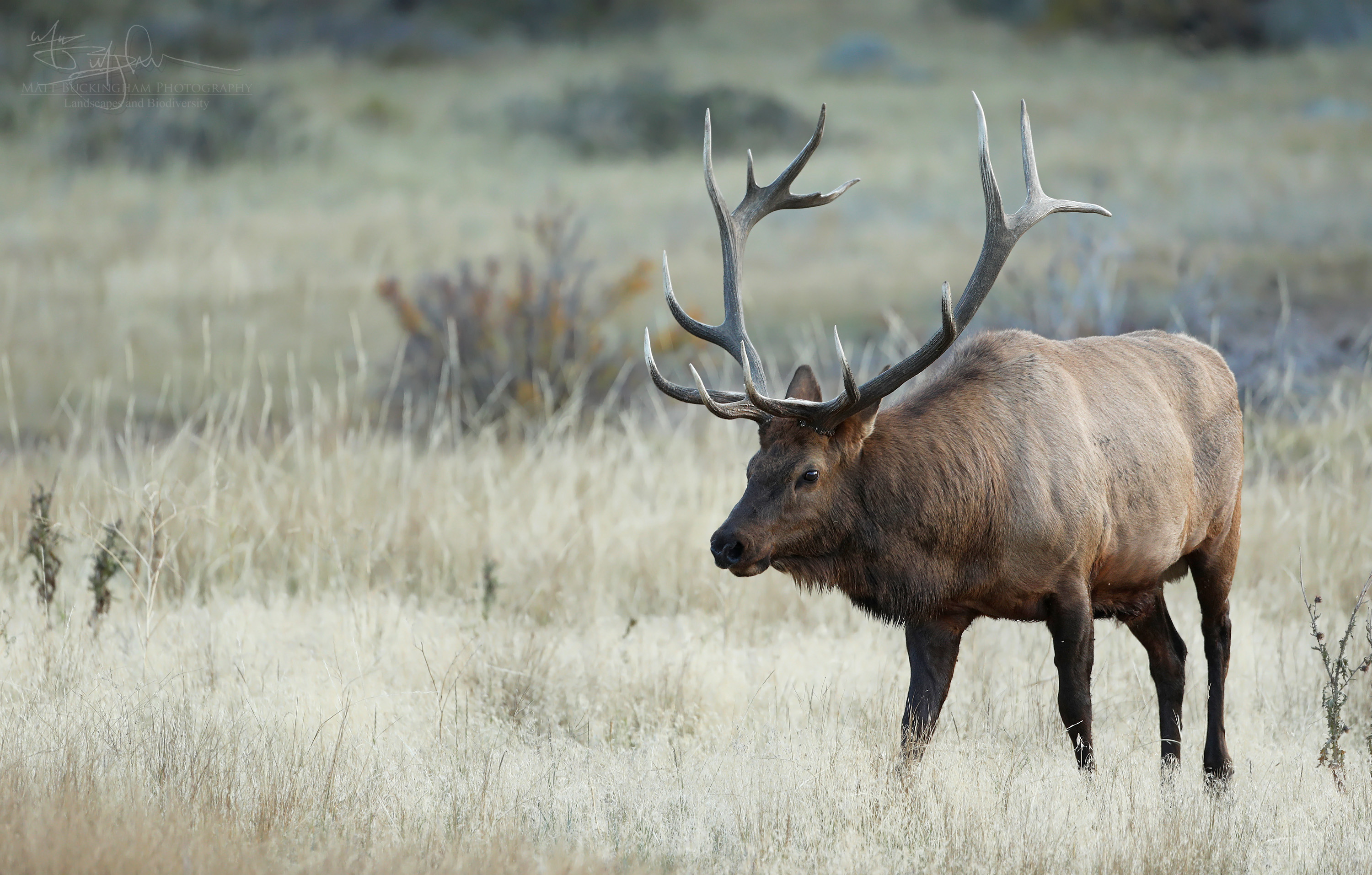
There are two reasons why Siete stands out as my favorite bull of the park. The first has to do with a special encounter we had one morning. Carolina and I arrived early to look for elk activity. We first saw Siete bugling high on a ridge with a single cow in his presence. There were other bulls nearby, but he paid them little mind, and was instead focused on his cow. I later theorize that she was just coming into estrus, but was not yet ready to mate. Siete bugled several times, and later both he and the cow vanished out of view. Caro and I moved further into the valley and found it empty of elk. On our return, Siete and the cow suddenly emerged from behind the crest of a small knoll, heading directly toward us. Suddenly we found ourselves away from the crowds, alone, with a massive bull elk barreling down. We took refuge behind rocks and I knelt down. In that moment the dense cloud cover that had persisted through the morning began to break up every so slightly, and filter sunlight bathed Siete as he let out a tremendous bugle that nearly forced me to bring my hands to my ears.
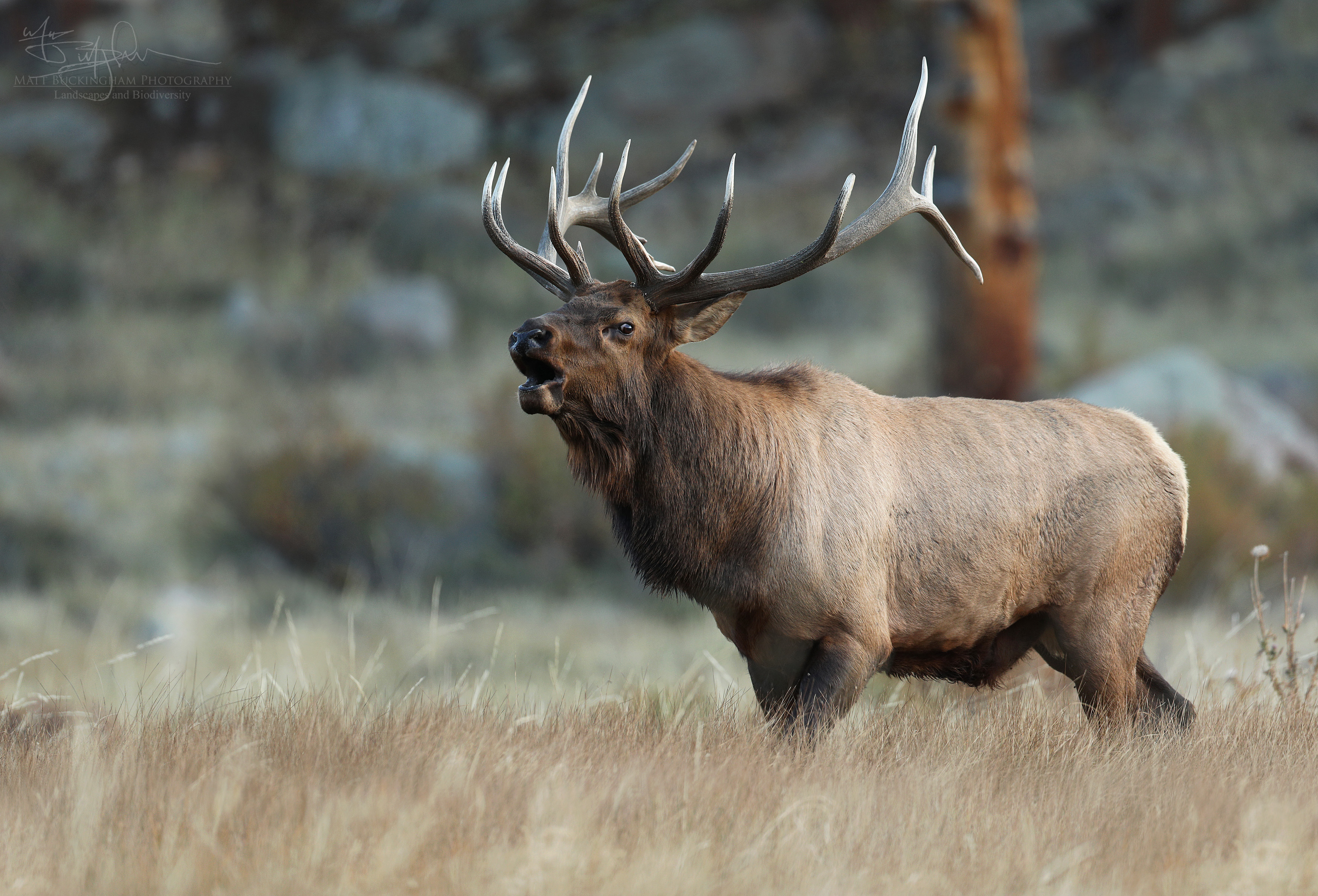
Then we witnessed something truly amazing. A bull elk in rut seems a bully. A creature bent on violence and dominance, looking to conquer rival bulls and cows alike. And while it is true that he may be harsh when chasing and corralling his harem, when it comes to mating, a mature, experienced bull is gentle and patient. In fact, it is often said that the mating system of the wapiti revolves around female choice. When a bull thinks of mounting one of the cows of his harem, he announces his intention by changing his posture. He approaches her a certain way and tests the air for her pheromones’. He then begins to copiously lick her, communicating that he intents to mount. If the cow is not ready, she will react by moving away and lowering her head while opening her mouth. An inexperienced, impatient bull may attempt to mount anyway, causing a great deal of stress to the cow who will continue trying to escape him. An experienced bull, however, will break off his pursuit immediately, and quickly let out a bugle. It is believed that the bugle in this scenario is meant as a signal to the cow that he has received her message and understands. The cow, in turn, will associate this sound with a patient bull that will not harass her. I believe that is what I captured here, as we watched this cow give that signal and Siete quickly halted his pursuit and let out a short bugle. The pair then disappeared deeper into the valley and the timber beyond.
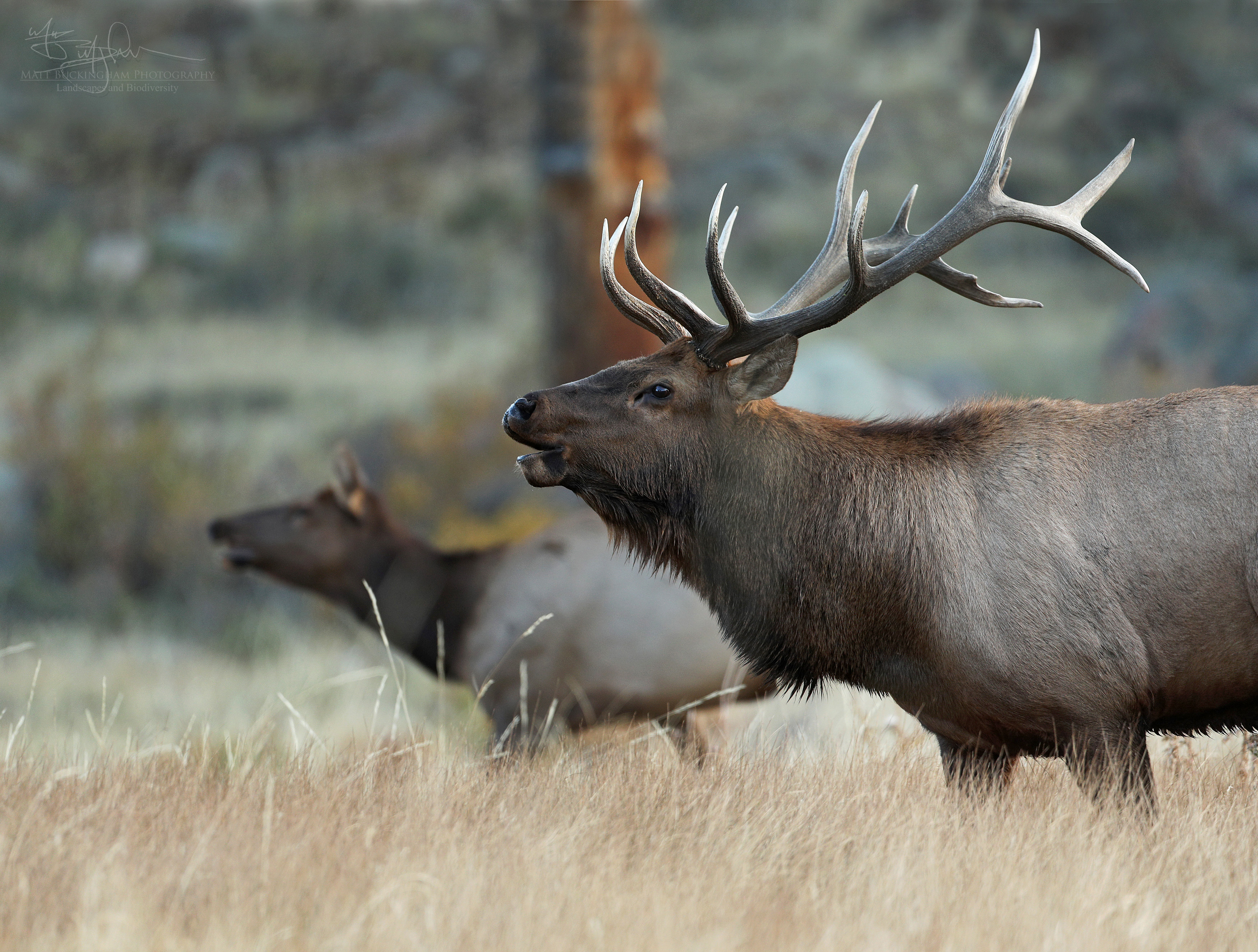
The second reason that Siete was my favorite bull has to do with information gleaned after our trip. I have been periodically looking through images on social media to see if I could find some of these bulls, and to learn more of their stories. A couple of weeks after we returned I noticed an image of a bull that had lost approximately 90% of his left antler, leaving only a single brow tine and a few inches of cracked beam. His right antler was at least half gone. I noticed a small projection at the base of the brow tine and realized that I was looking at Siete. The shapes of the other remaining tines matched up. At first I was sad that this happened to the bull that I shared a special encounter with, but then I started reading through the commentary, and finding more images and reading more into the story. The accounts indicated that in spite of this wound, Siete had not given up in the rut, and had in fact managed to acquire and retain a large harem. One post even stated that he successfully fought off three large bulls that tried to move in and steal his cows. Siete was a warrior. And a good one at that. I did catch a glimpse of this on our last night in the park, when I saw Siete square off with Hothead. The battle lasted all of 10 seconds before Hothead beat a very hasty retreat, Siete hot on his heels.
Though I’ll never know for certain what happened to Siete, I don’t think I’m taking too many liberties in piecing his story together. I imagine that Siete found himself in close proximity to another large bull, likely the King. Whether Siete wandered too close to the King’s ladies or the other way around is impossible to know and largely irrelevant. Whatever happened, the situation was elevated to combat, and the sound that their antlers made as they crashed together must have echoed across the valley. The combatants then would have pushed against one another with all they had, trying to cause the other to lose balance and penetrate their opponents defenses with one of their sharpened tines. Their weapons would have been entwined, and with his immense strength, Siete may have been gaining the upper hand when he wrenched his massive neck with all his might in an attempt to bring the King down. The King’s antlers, however, were much larger and stronger, and in the fray they held strong while Siete’s snapped all the way through. The fight was lost, and Siete would have had to beat a hasty retreat or risk incurring a fatal injury.
Antlers are made of bone, and a break that close to the base of the antlers must have been painful. There is no time to recover during the rut, however. Everything is on the line, and if Siete hoped to pass on his genes to the next generation, he couldn’t give up. So he would have set about reforming his harem, bugling into the cold, wild air. Over time he had drawn enough cows to him to catch the attention of other bulls. Without his headgear, he would not appear intimidating to rival bulls and was likely challenged often. But those bulls who approached him expecting an easy fight were soon to realize they had made a grave mistake, when this incredibly powerful pull managed to catch their attack with what remained of his antlers and with determination, will, and immense strength banished them from his domain. I wish I could have seen this in person, but was really glad I was able to piece together his story through the accounts of others. I hope that I will see Siete again one day, and that his progeny spread throughout the park and beyond, carrying with them the genes of this wapiti warrior.
Stubhorn
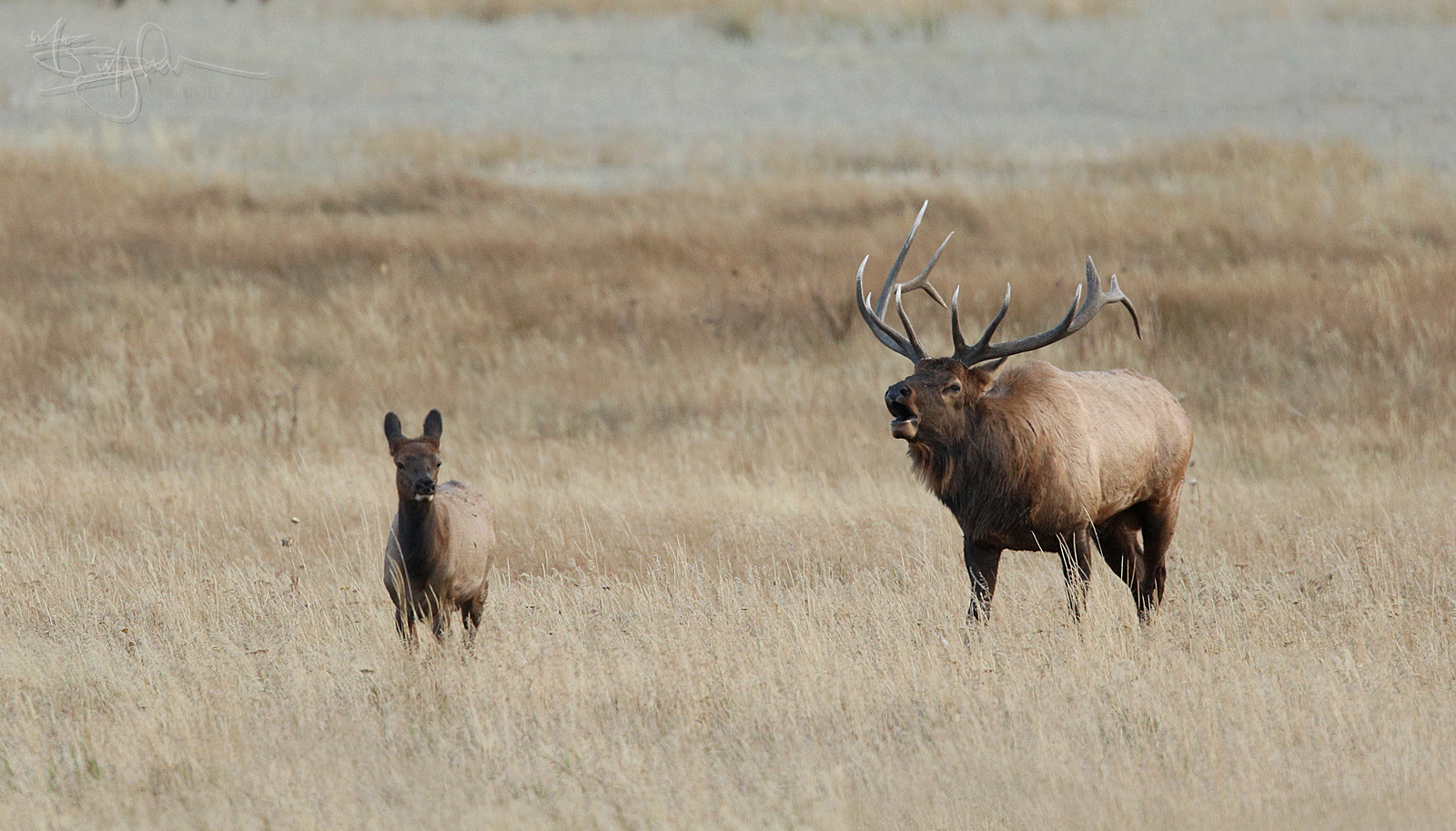
An old bull missing part of his left dagger, Stubhorn had succeeded in holding a small harem. We watched as he tested his cows and ran off a number of satellite bulls that had pushed their luck a bit too far. For most of the evening he stayed close to his harem, bugling to reaffirm his position.
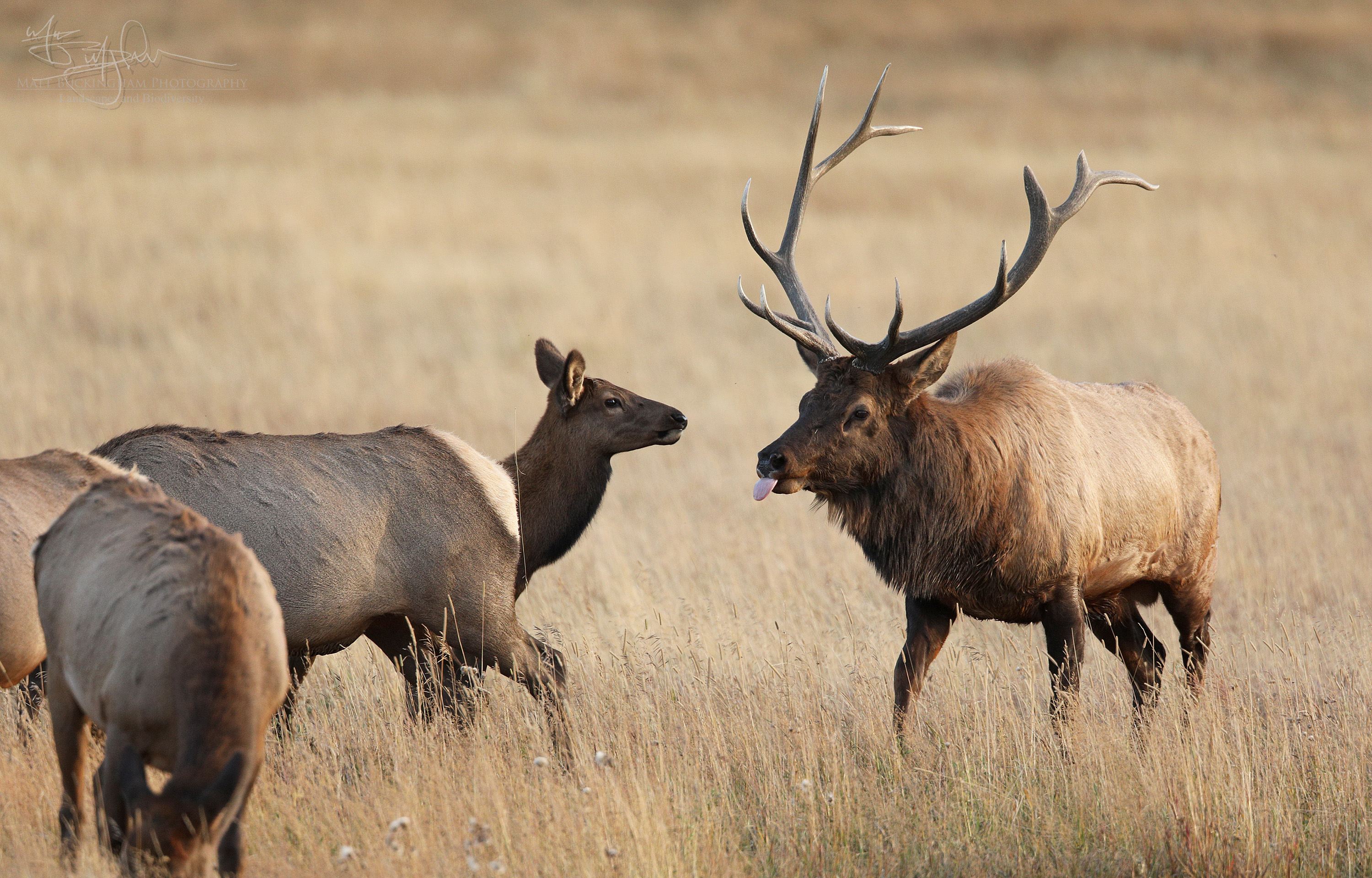
At some point in the evening, however, his bugle must have invited an unwelcomed challenger who had apparently claimed Stubhorn’s harem as his own. Later we saw the veteran bull alone, wandering a ridge in the direction of the King. The King would not have this, and quickly broke away from his cow and her calf, and made his way toward Stubhorn, screaming a bugle with bloodlust in his eyes. Stubhorn thought better of escalating the situation, and quickly retreated. The rut was far from over, however, and I imagine that the old bull was plotting his revenge. Harems would change loyalties many times throughout the autumn, and both losses and victories are often short lived.
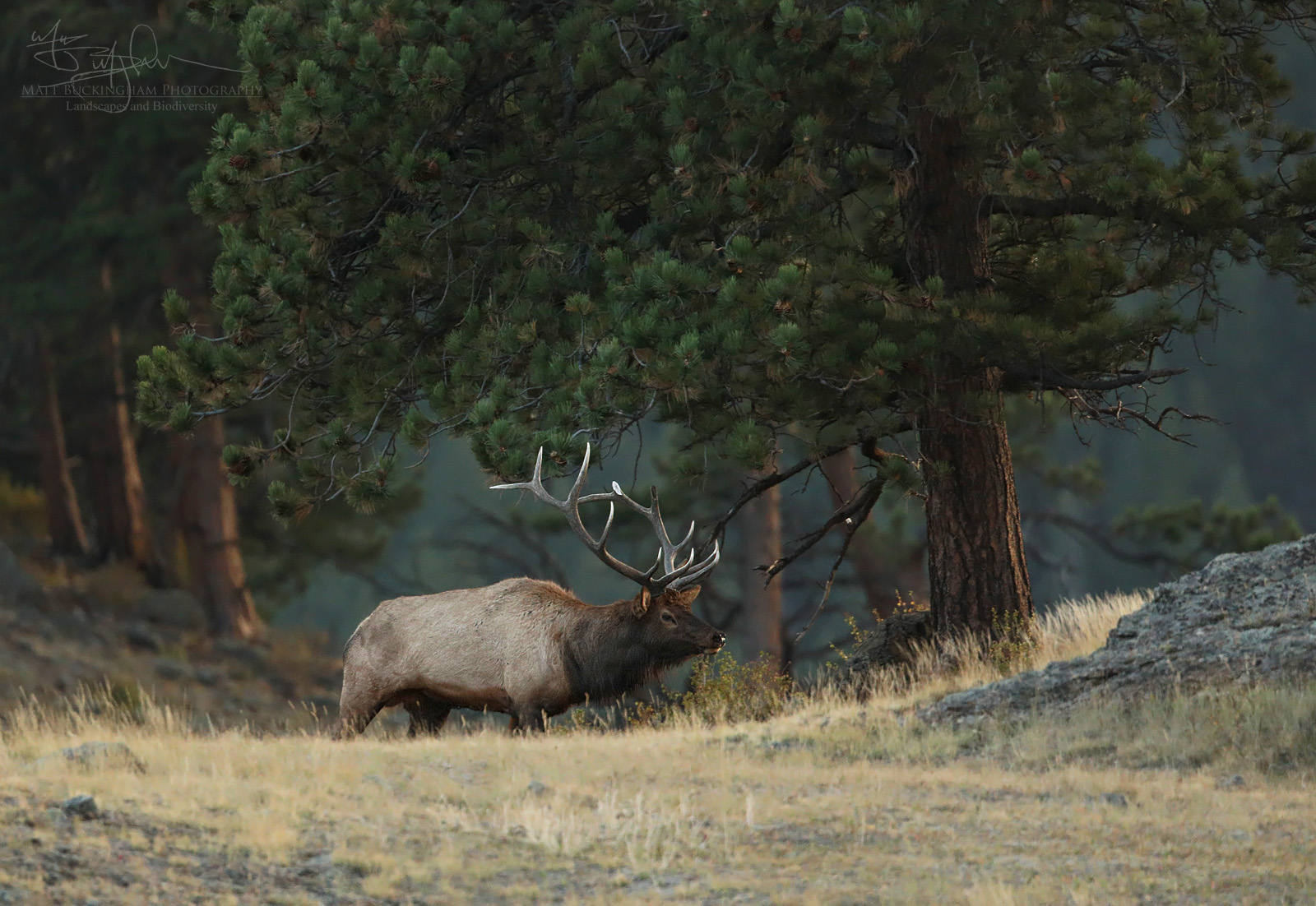
Hothead
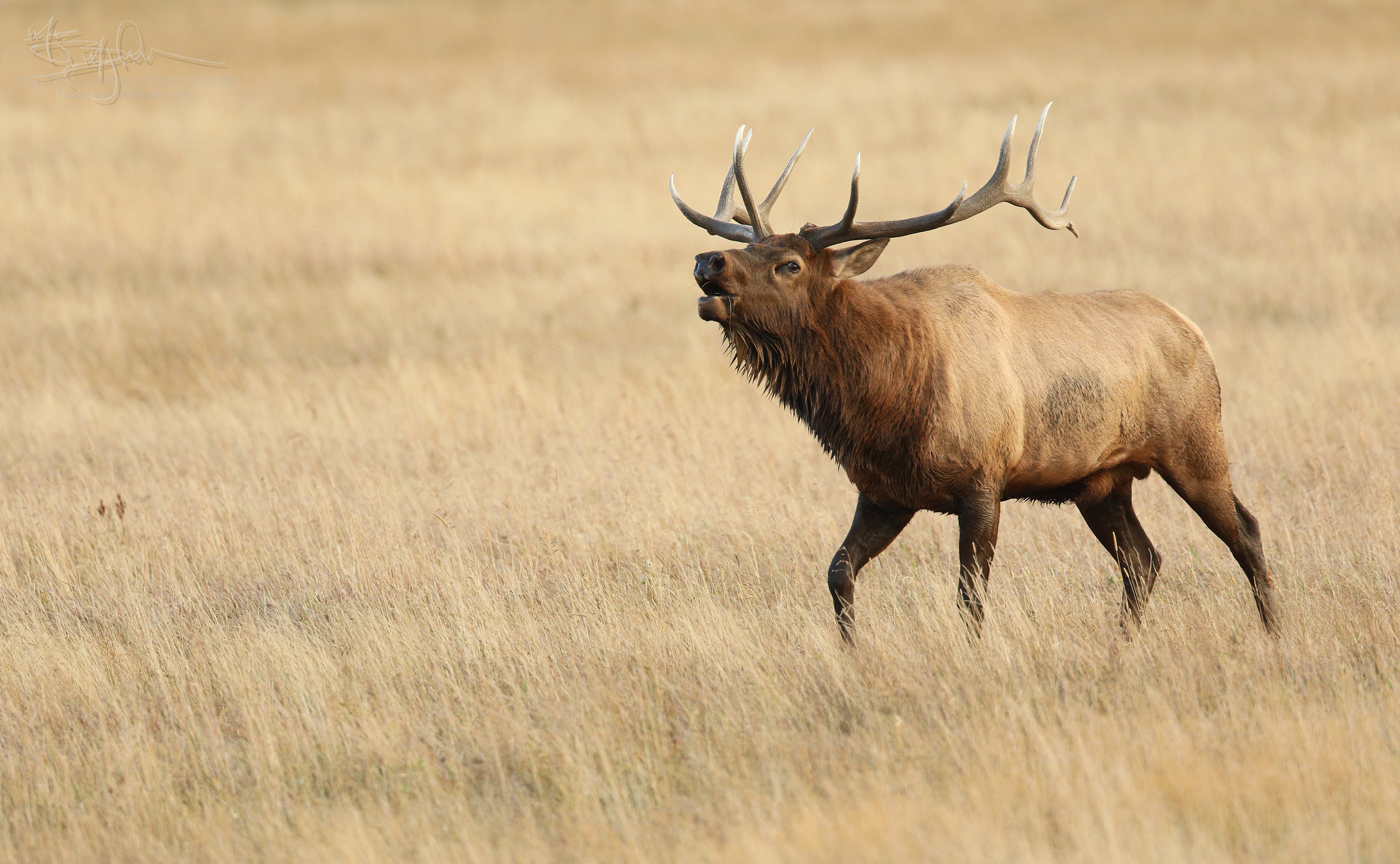
When a wapiti bull reaches a certain age, he will likely begin to “regress”. A regressed bull will display antlers that are smaller than they were in their prime. This is not to say that a regressed bull is weak however. He is still a very dangerous, formidable opponent to younger bulls and carries the benefit of experience.
I believed that Hothead may have been an example of a bull that has regressed. He looked a battle-hardened veteran of the rut, and was essentially fearless. He was the most aggressive of the bulls we saw, and was very quick to scold a wandering cow or challenge a rival bull that came too close.
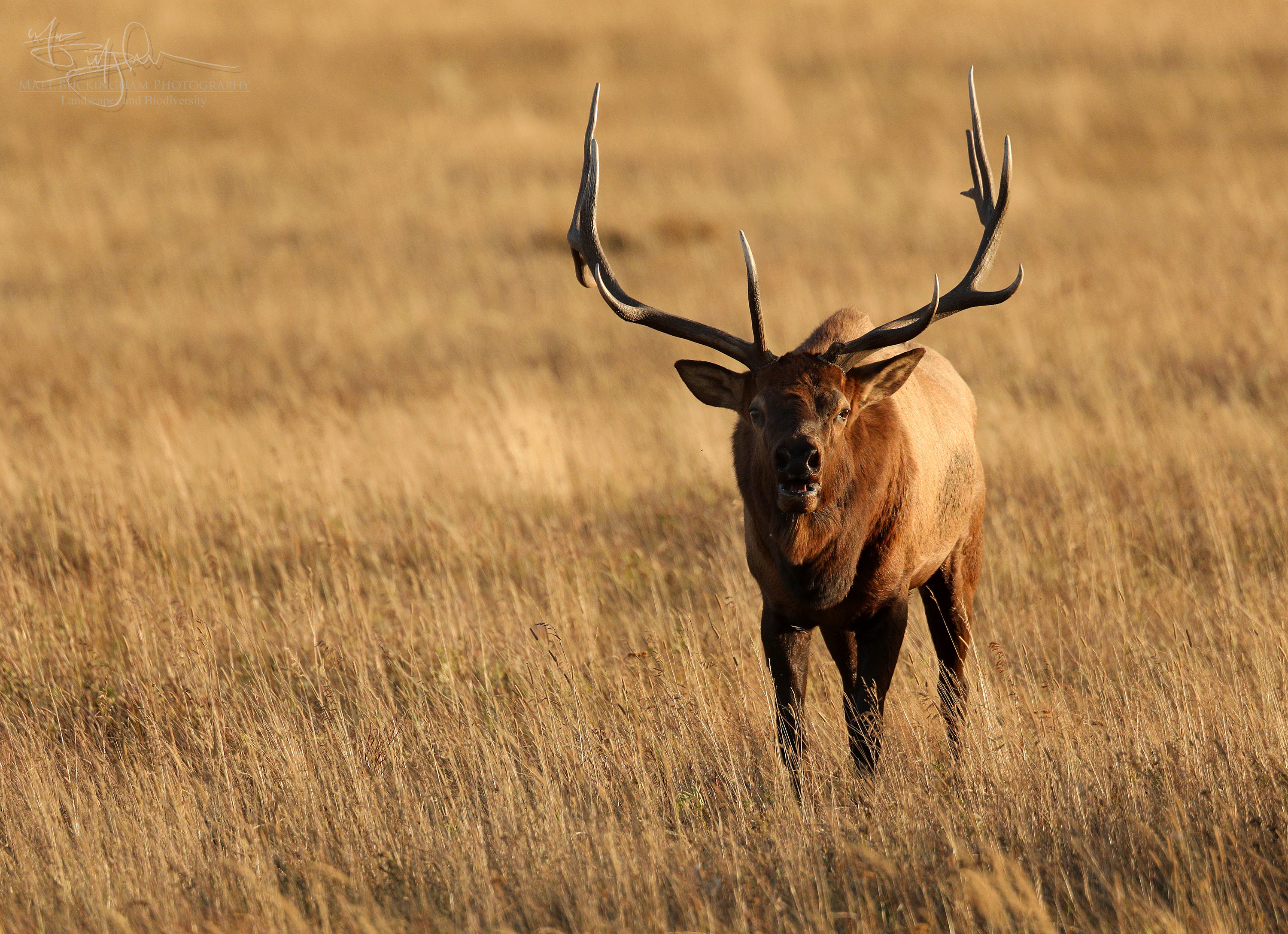
Hothead was also prone to fight. I watched him lock horns, albeit briefly, with both Siete and Scarface. Though he lost both battles, it did little to lower his spirits, and he went right back to pursuing cows and preparing to take on any newfound threat.
Like many of the bulls we encountered, Hothead was missing one of his tines. His left brow tine, to be specific, had been broken off. The configuration of his antlers was of particular interest. He bore five tines on his right antler and seven on his left. Perhaps this asymmetry was another sign of his regression. Hopefully Hothead has a few more ruts in him, where he may continue to keep the younger bulls on their toes.

Scarface
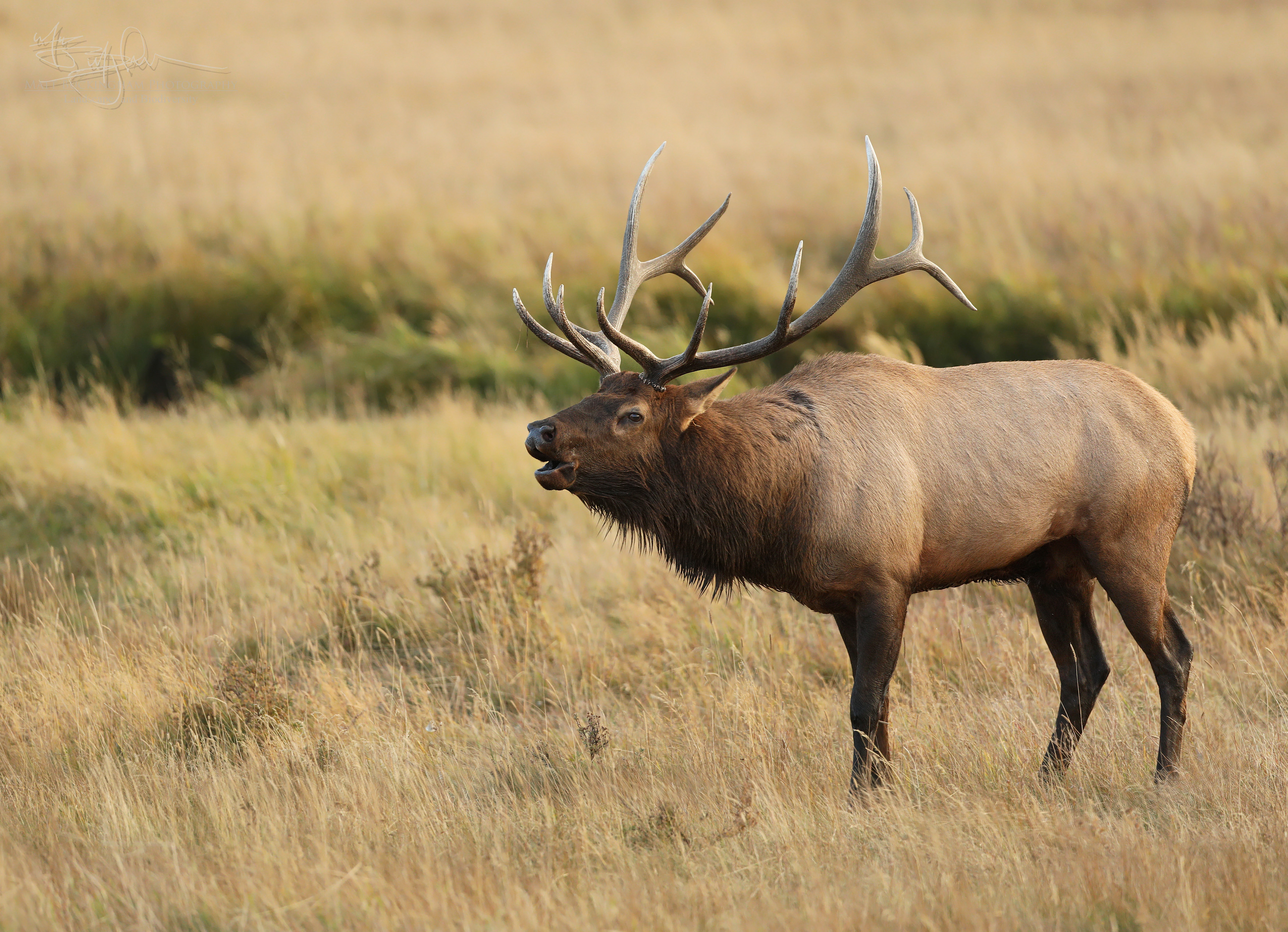
Observing and photographing the elk rut gifted me with a wealth of exciting experiences. The most exhilirating, however, came courtesy of a bull that I named Scarface for a small cut over his left eye. I met Scarface during our final evening in the Park. I found a nice slope at the edge of a broad morainal valley. The Big Thompson River, little more than a trickle here just downstream of its headwaters, separated me from most of the action. I’ve read that dominant bull elk like to use streams like this as natural boundaries to help herd their harems. To my left was an old ponderosa pine with a dense gooseberry bush at its base. These obstructions essentially blocked much of my view to the left.
As I was focusing on Hothead and his harem across the river, I heard a sudden commotion to my left. Suddenly, a group of wapiti cows emerged about ten yards in front of me, their approach blocked by ponderosa, gooseberry, and my position on the slope. Hot on their heels was Scarface. After bursting into view, he quickly turned around, looked to me, and bugled at point blank range – a sound so forceful that it was almost bone jarring.
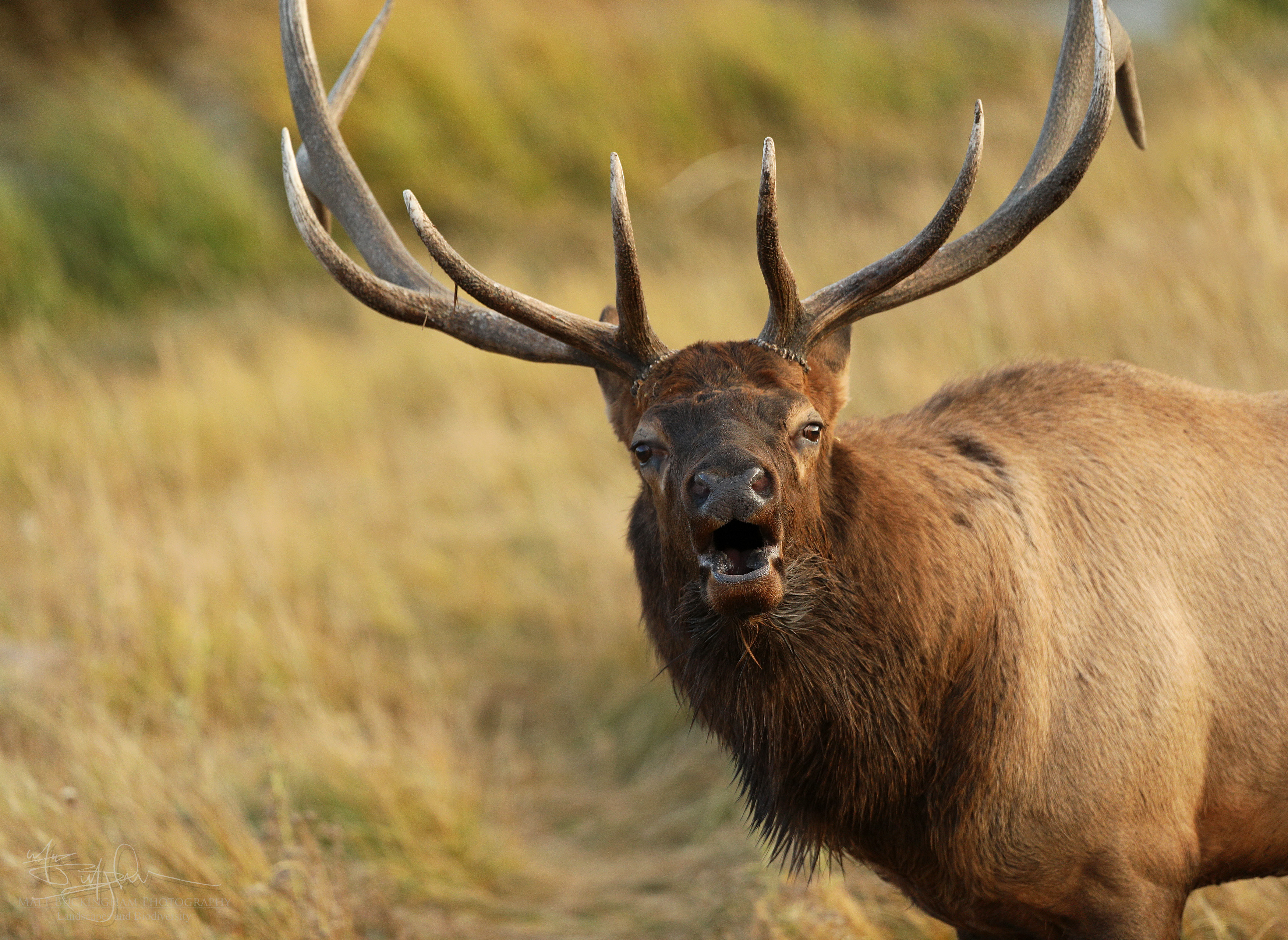
In all fairness, it was unclear if he was communicating his displeasure with having me at such close range, or if he was simply changing his position project his voice in different directions, ensuring that more potential competitors and mates would hear him. If he was telling me to back-off, the message was received. There was no confusing who was in charge of the situation. I quickly scrambled to get up from the gravelly slope, scraping my knee in the process, and retreated to a safe distance.
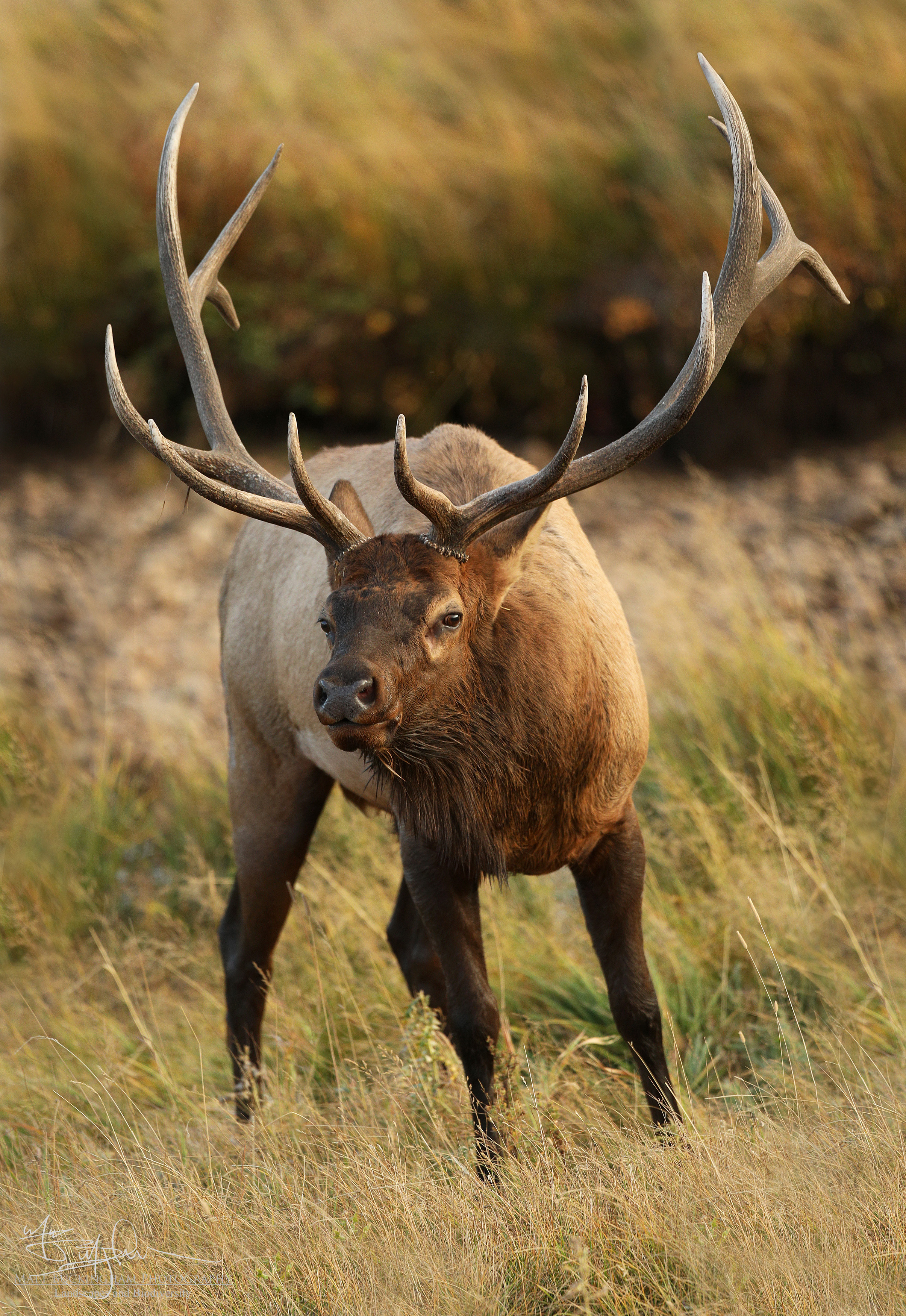
After bugling again, Scarface returned to herding his harem, and dropped into the stream for a drink and a soak. At some point, Hothead approached from the bank, which was several feet higher than the channel bottom where Scarface stood. The challenging bull lowered his head as if to threaten, and Scarface answered his challenge by surging forward and slamming his antlers against Hothead’s, sending a literal echo rippling across the valley. It can be hard to understand the force that these warriors exert, but the sound that clash of antlers made left no doubt as to the sheer power of a wapiti bull.
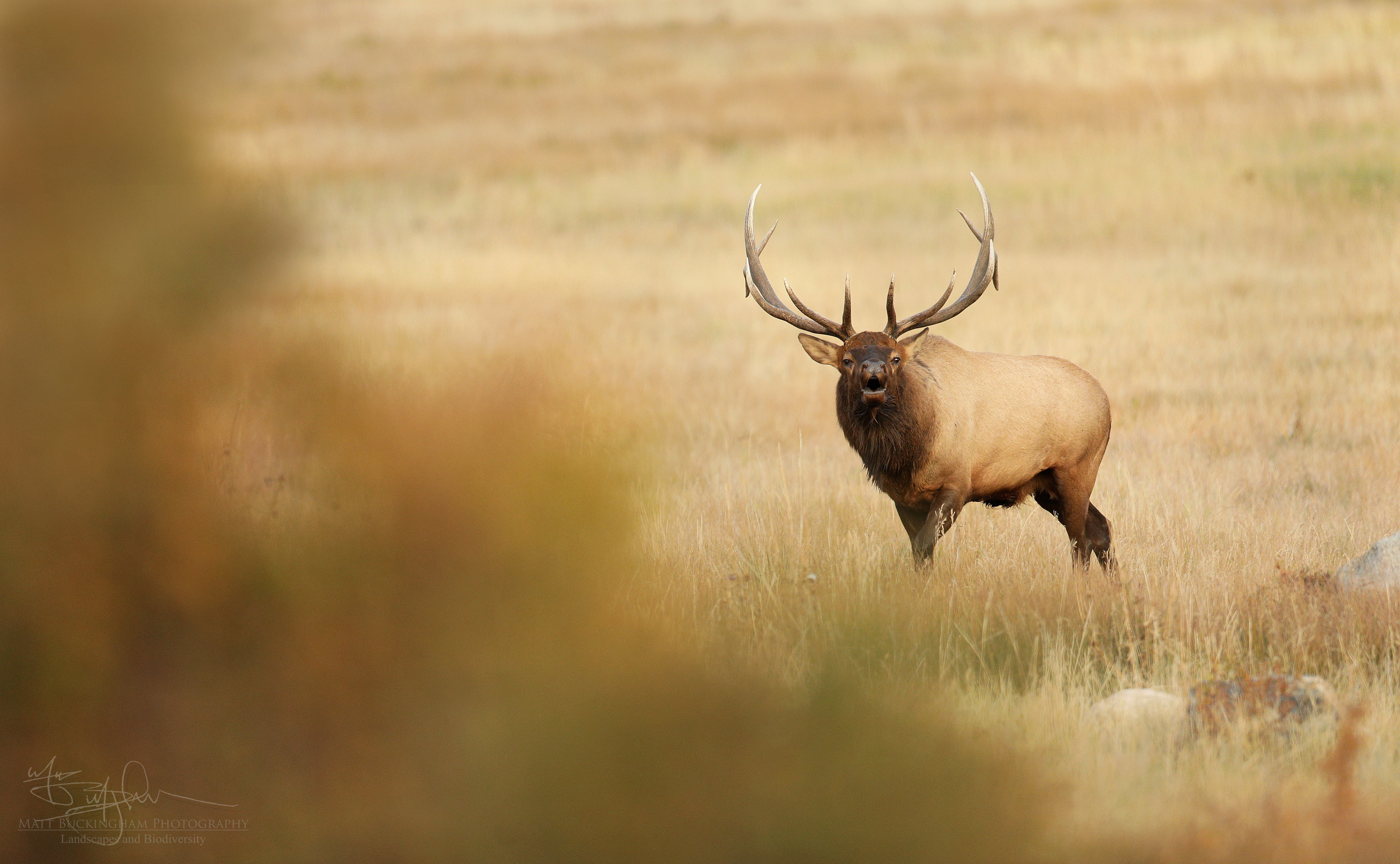
It was evident that Scarface’s show of force convinced Hothead that this opponent was not to be trifled with, and he beat a hasty retreat. Scarface continued his soak before returning to his harem and ushering them along. I watched them as long as I could, until they vanished behind one of the many rocky ridges of the moraine.
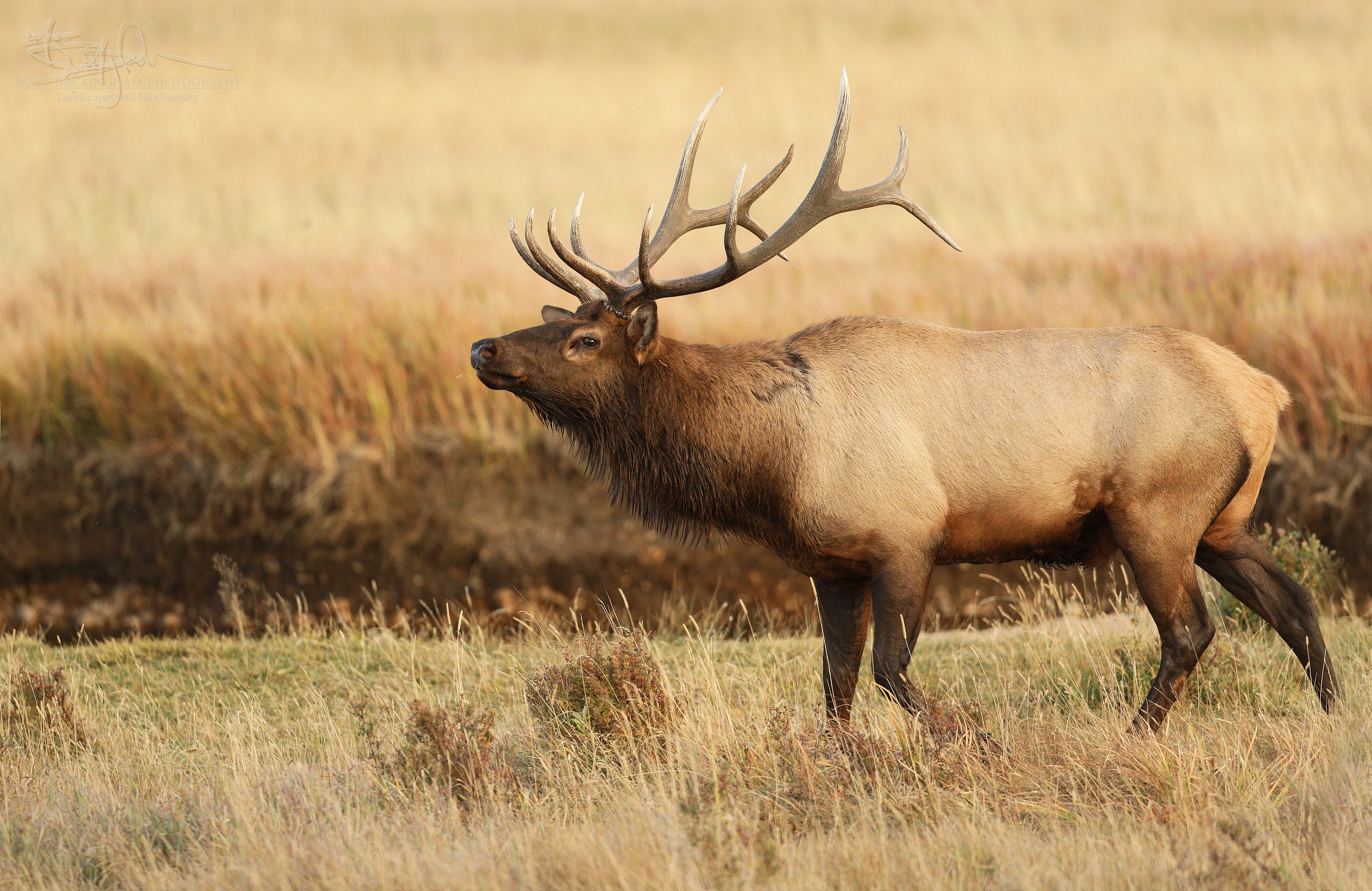
There were plenty of other wapiti seen during our visit to Rocky Mountain National Park. The park remains one of the very best places to observe free-ranging elk today, however this was not always the case. By the turn of the twentieth century, elk had been extirpated from the region. When the park was established in 1915, the iconic elk was essentially absent. Only a few individuals likely inhabited the park, resulting from a reintroduction effort a year prior. Following their reintroduction, elk numbers grew quickly, and today they are abundant throughout much of Colorado – a true conservation success story. Today they are so abundant, in fact, that they are having detrimental effects on some of the park’s plant communities.
Still, Rocky Mountain and other National Parks are some of our planet’s best places to observe wildlife. Absence of hunting pressure, and habituation to human presence allows us to observe them and their behaviors much in the same way that early explorers did. They are a tiny piece of a natural splendor that was forever lost with westward expansion. It is of great comfort to me knowing that in the autumn, when the leaves begin to change, and the air grows cold, the wapiti’s bugle will continue to sound throughout these timbers and valleys long after I’m gone.











































